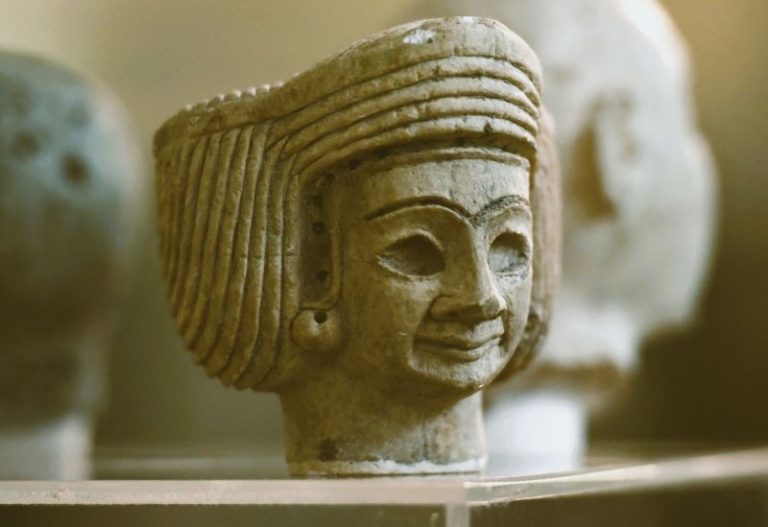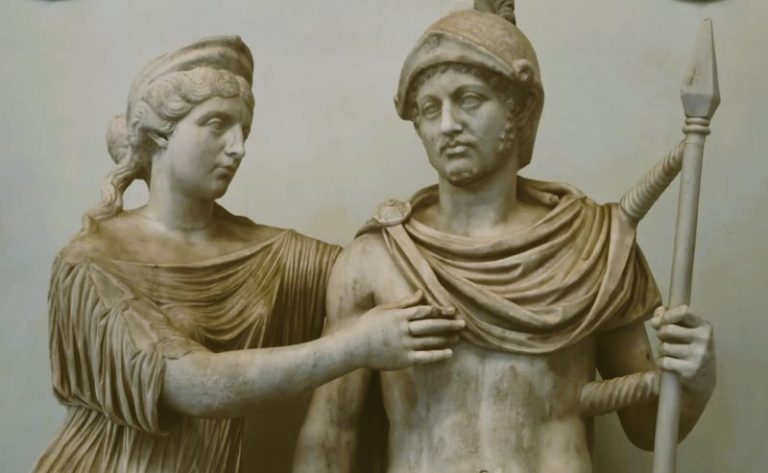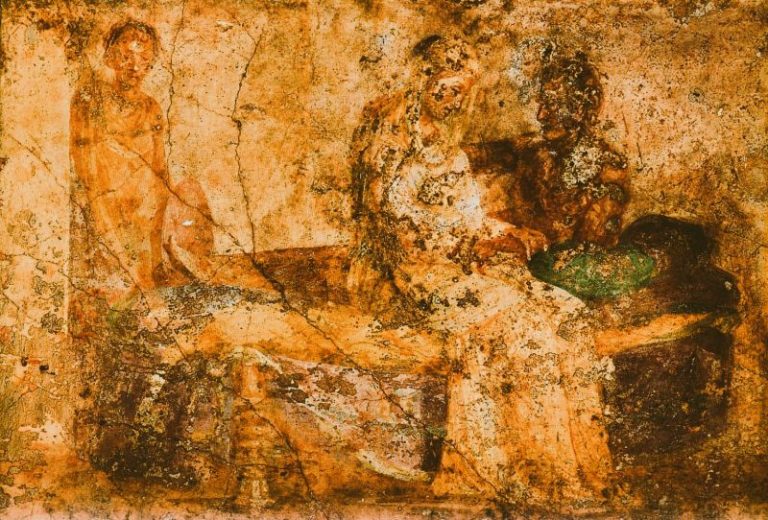
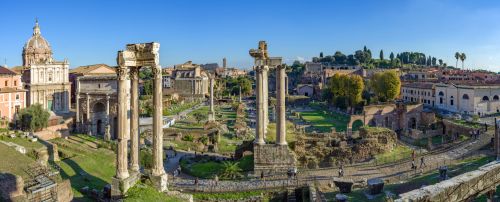
The Roman state recognized early that bureaucracy was necessary to sustain imperial control.

By Matthew A. McIntosh
Public Historian
Brewminate
Introduction
Importance of Administration
The administration of the Roman Empire was the skeletal framework upon which the vast and diverse territories of the empire could be coherently governed. Without a stable administrative system, the challenges of managing a multicultural, multiethnic, and geographically sprawling empire would have rendered the Roman project untenable. At its core, Roman administration allowed for the projection of Roman authority far beyond the city of Rome itself, establishing a system in which laws could be enforced, taxes collected, and military forces supplied across thousands of miles. The genius of Roman governance lay in its ability to blend a centralized imperial structure with a measure of local autonomy, adapting administrative tools to a variety of regional contexts. This administrative flexibility was a crucial factor in the empire’s longevity, as it facilitated integration rather than mere subjugation, allowing subject peoples to participate in the empire’s workings while still asserting the primacy of Roman authority.
The Roman state recognized early that conquest alone was insufficient to sustain imperial control. It was the bureaucratic follow-through—the ability to administer what had been conquered—that transformed military victories into enduring rule. This became especially evident during the late Republic and early Principate, when Rome began to transition from a dominion based on patronage and personal networks to a more codified administrative model. Augustus’ administrative reforms exemplify this shift: by restructuring provincial governance, introducing census-taking and taxation systems, and professionalizing aspects of civil service, he laid the groundwork for a sustainable imperial bureaucracy. His establishment of the cursus publicus (imperial postal system) and the use of equestrian officials in critical roles further reflect the importance placed on efficient administration as a means of consolidating and extending imperial power.
The success of Roman administration was also integral to the construction and maintenance of Roman identity across provincial populations. Through tools like Roman law, coinage, urban planning, and religious institutions, the state fostered a sense of order and belonging that transcended ethnicity or local traditions. Administrative structures became vectors of Roma nization, diffusing Latin language, Roman civic ideals, and architectural forms throughout the empire. In cities such as Antioch, Carthage, or Londinium, one could find Roman magistracies, forums, aqueducts, and temples mirroring those in the capital. This replication of administrative and cultural forms created a shared imperial identity that served not just ideological purposes, but practical administrative cohesion, especially in times of crisis.
Administration served as a tool of control and surveillance. Governors, tax assessors, and military officials were not merely bureaucrats; they were agents of imperial oversight. The use of written records, censuses, and legal proceedings allowed the central government to monitor its population, assess productivity, and respond to unrest with speed and precision. This administrative intelligence-gathering was especially vital in provinces far removed from Rome, where imperial presence was minimal. Even in these distant territories, the standardization of procedures—such as legal codes, weights and measures, and fiscal records—ensured that imperial expectations could be enforced and evaluated. This rationalization of authority gave Rome an advantage over other ancient empires, whose more localized and ad hoc administrative systems could not match the scale or uniformity of the Roman approach.
The decline of Roman administrative efficiency in the later centuries of the empire played a significant role in its eventual fragmentation. The expansion of the bureaucracy under emperors like Diocletian and Constantine introduced greater centralization but also increased complexity and burdens on provincial populations. While initially intended to restore control and order, this growth became unsustainable, contributing to economic strain, corruption, and a widening gap between the imperial center and its peripheries. The administrative overreach, combined with diminishing revenues and increasing external pressures, undermined the system that had once held the empire together. Thus, if administration was the lifeblood of Roman imperial success, its dysfunction marked the beginning of imperial decline. Understanding the critical importance of administration, therefore, is essential to understanding both the strength and eventual weakness of Rome’s imperial experiment.
Methodology and Sources
The study of Roman government and administration relies on a broad and interdisciplinary methodological framework that combines literary analysis, epigraphy, archaeology, and papyrology. Each category of evidence offers a unique lens through which to reconstruct the administrative machinery of the Roman world. Literary sources, especially historical narratives, provide overarching perspectives on institutions, legal developments, and the careers of prominent officeholders. However, they are often colored by political agendas and genre conventions. Therefore, they must be read critically and supplemented with material evidence. The integration of epigraphic data—public inscriptions, honorific dedications, and official decrees—permits scholars to examine how administration functioned in practice rather than merely in theory. Together, these sources form the bedrock of modern understandings of Roman bureaucratic organization, allowing historians to trace not only structural developments but also the day-to-day operations of governance across centuries.
Among literary sources, key authors include Cicero, Livy, Tacitus, Suetonius, and Cassius Dio, each offering perspectives shaped by their time and purpose. Cicero, as a statesman and orator deeply embedded in the late Republican political system, provides firsthand insights into the senatorial aristocracy, provincial administration, and legal procedures. His speeches and letters are invaluable for reconstructing the internal workings of the Republic. Livy’s historical epic emphasizes Rome’s mythic and institutional foundations, while Tacitus offers a biting critique of imperial governance, often emphasizing moral decline and autocracy. Suetonius, writing imperial biographies, focuses more on the personalities of emperors and their administrative styles, while Dio’s long-spanning history offers an annalistic account of institutions across both the Republic and Empire. Although these sources are indispensable, they are not without problems: elite bias, rhetorical embellishment, and chronological inconsistencies must be accounted for when assessing their value for administrative history.
Epigraphy offers a more grounded, empirical dataset and is particularly crucial for tracing the diffusion of Roman administration across the provinces. Inscriptions on stone, bronze, or other materials offer direct testimony of magistracies, legal edicts, building projects, and honors conferred upon officials. They are often formulaic but rich in institutional terminology, titles, and procedural language. The Corpus Inscriptionum Latinarum (CIL) is the principal repository of these inscriptions and has been fundamental in assembling prosopographies of officeholders and mapping the geographical extent of Roman governance. Inscriptions such as the Lex Irnitana or the Tabula Banasitana preserve entire sections of Roman municipal law, offering unparalleled insight into the legal and administrative norms of Romanized communities. Unlike literary sources, epigraphy reflects the voices of local elites and communities interacting with the imperial system, revealing how central policy was translated into local practice.
Papyrological evidence, especially from Egypt, provides an intimate and detailed record of administrative functioning on a day-to-day basis. Owing to Egypt’s dry climate, an exceptional quantity of administrative documents—tax records, military rosters, court proceedings, census returns, and letters—has survived on papyrus. These materials shed light on how imperial decrees were implemented at the grassroots level, the careers of lower-level bureaucrats, and the fiscal structures that underpinned Roman governance. The papyri reveal a complex web of officials working at the intersection of Roman, Greek, and Egyptian traditions, emphasizing the hybrid and adaptive nature of administration in the provinces. Collections such as the Oxyrhynchus Papyri and Papyri Graecae Magicae contain thousands of documents that have transformed our understanding of provincial governance and the logistical realities of imperial rule.
Archaeology provides crucial material context for administration, often revealing aspects of state functioning absent in the textual record. Administrative buildings such as basilicas, forums, archives (tabularia), and governor’s residences (praetoria) physically embody the presence of the Roman state in urban and provincial landscapes. Road networks, milestones, and post stations attest to the importance of communication infrastructure, while coin hoards and minting sites speak to fiscal administration and monetary policy. Archaeological discoveries, especially those involving inscriptions in situ, often correct or complement literary narratives, helping to resolve chronological disputes or illuminate undocumented practices. The combination of these methodologies—textual analysis, epigraphic cataloguing, papyrological interpretation, and archaeological contextualization—creates a multi-dimensional picture of Roman administration that continues to evolve with each new discovery.
Early Roman Administration in the Regal and Republican Periods
Monarchy and Early Offices
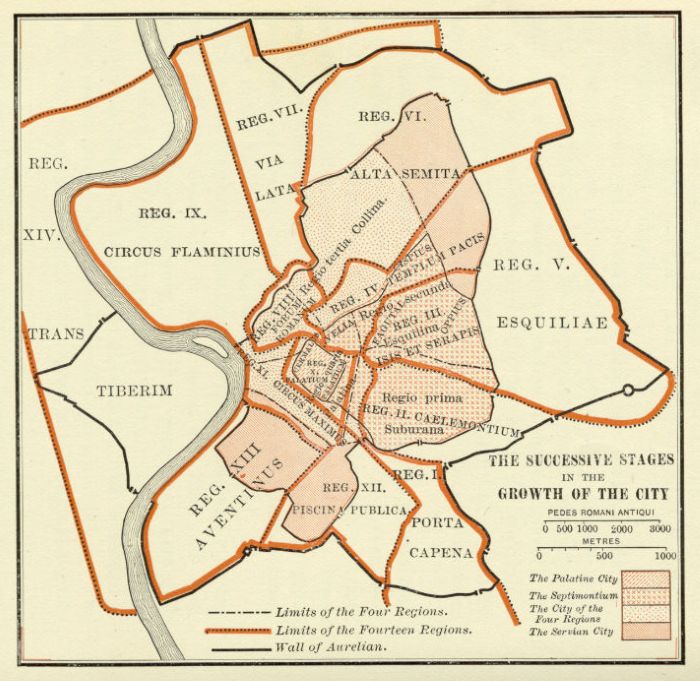
The earliest phase of Roman political development is traditionally characterized by kingship, a monarchical system that, though obscure and heavily mythologized in the sources, laid the foundational administrative structures later adapted by the Republic and Empire. According to Roman tradition, the city was ruled by seven kings from the founding of Rome in 753 BCE until the expulsion of Tarquinius Superbus in 509 BCE. These kings, though often depicted as either benevolent lawgivers or tyrants in the literary tradition, exercised a range of political, military, religious, and judicial functions that centralized authority in a single figure. The king (rex) served as commander-in-chief, chief priest (pontifex maximus in nascent form), supreme judge, and lawmaker. This concentration of authority allowed for rapid decision-making and institutional development during Rome’s formative years. While our sources—mainly Livy, Dionysius of Halicarnassus, and later Roman historians—project much later ideas onto these early kings, the institutional memory preserved in Roman political and religious structures indicates that their rule had long-lasting administrative consequences.
Under the kings, Rome saw the emergence of the first political and religious offices that would persist, in altered forms, throughout the Republic and into the Empire. The king did not rule alone; he was assisted by various officials and bodies, most notably the senatus and the comitia curiata. The Senate, initially an advisory council of elders (patres), held no legislative authority but served as the king’s deliberative body. This early Senate established the tradition of aristocratic consultation that remained central to Roman political culture. The comitia curiata, an assembly organized by kinship-based groups (curiae), formally ratified the king’s authority and played a role in witnessing wills and conferring imperium. The king also relied on appointed officials, such as the lictors who symbolized his coercive power with their fasces, and other functionaries whose roles would be institutionalized and expanded during the Republic. The dual religious and political nature of the king’s authority set a precedent for later Roman magistracies, in which religious and civic duties were often inseparable.
Crucially, the Roman kings are credited with organizing the first census, instituting tribal and centuriate divisions, and laying the groundwork for Rome’s military and civic structure. Servius Tullius, the sixth king, is traditionally credited with implementing the Servian Constitution—a major administrative reform that restructured Roman society based on wealth and military obligation rather than kinship. This reform introduced the comitia centuriata, a new assembly that reflected a more complex class-based society and served military and electoral functions. It also facilitated the future organization of Roman magistracies and the army, demonstrating a shift toward more bureaucratic and meritocratic principles in governance. Whether these reforms occurred precisely as described is debated, but archaeological and comparative evidence suggest that Rome was indeed becoming more organized and stratified in the late regal period, reflecting broader Italic and Mediterranean trends in state formation.
The office of king was unique in that it was non-hereditary—each new king was elected by the Senate and confirmed by the people, albeit under the guidance and influence of the existing aristocracy. This system, which combined monarchical rule with elite consultation and popular ratification, embedded the idea of shared sovereignty deep in the Roman political psyche. Even after the abolition of monarchy, Romans retained a fear of kingship while simultaneously preserving many of its administrative mechanisms. The imperium once held by kings was later redistributed among republican magistrates, especially consuls and praetors, while the religious authority of the king was absorbed by the rex sacrorum, a symbolic religious figure deprived of political power. This continuity of function without title underscores how the administrative tools of kingship were too useful to discard, even as Rome transitioned to a radically different constitutional model.
While the historicity of specific kings and their deeds remains a subject of scholarly debate, the administrative legacies of regal Rome are undeniably real. The structuring of assemblies, the formalization of religious and civic offices, and the embryonic legal traditions attributed to the kings all played a crucial role in shaping the administrative character of the Republic. Far from being a dark age of autocracy, the regal period was a time of institutional experimentation and foundational development. The kings were not merely rulers but architects of Roman public life, whose innovations would be reinterpreted, repurposed, and revived throughout the long history of Roman governance. Their legacy, filtered through Republican ideology and imperial nostalgia, testifies to the enduring significance of the earliest Roman administrative models.
Magistrates and the Senate in the Republic
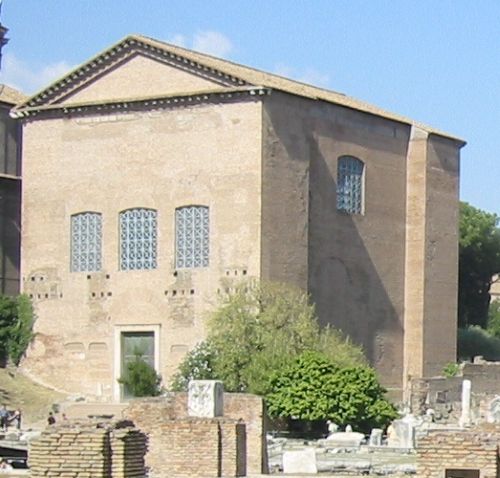
The Roman Republic, established in the wake of the expulsion of the monarchy around 509 BCE, marked a decisive shift from centralized monarchical rule to a system rooted in collegiality, annual tenure, and popular election. The Republic’s magistracies were designed to prevent any single individual from monopolizing power, reflecting the deeply embedded Roman aversion to kingship. The key feature of Republican magistracies was the principle of collegialitas—each major office was held by at least two men at once, who could veto one another (intercessio), thus creating a check within the office itself. The most senior of these magistracies was the consulship. Each year, two consuls were elected with imperium, or the power to command armies and govern the state. They presided over the Senate and popular assemblies, oversaw foreign policy, and served as the highest judicial authorities. Below the consuls in rank were praetors, who primarily handled judicial responsibilities but could also assume military command or provincial governorship in the consuls’ absence.
A hallmark of the Republican administrative system was the cursus honorum, or “course of honors,” a structured path of political advancement that regulated access to higher offices. The typical cursus began with a term as quaestor, the lowest magistracy, responsible for financial administration and record-keeping. From there, a politician could rise to the aedileship, which oversaw public works, games, and markets, although this was optional. The next step was the praetorship, followed ultimately by the consulship. A separate and powerful office was the censorship, held by two former consuls every five years for an 18-month term. Censors conducted the census, assigned citizens to voting tribes and centuries, and exercised regimen morum—supervision of public morality. The system was hierarchical, meritocratic (at least among the elite), and deeply competitive, requiring a blend of oratory skill, military achievement, and public generosity. It not only structured careers but also provided administrative continuity and divided responsibilities across multiple officeholders.
The Senate, though originally an advisory body, evolved into the Republic’s most powerful and enduring institution, providing the institutional backbone of Roman administration. Though it could not pass laws, the Senate exercised de facto control over policy through its senatus consulta (advisory decrees), which magistrates almost always obeyed. It oversaw the treasury (aerarium), managed foreign relations, appointed provincial governors, and played a key role in religious and civic matters. Membership in the Senate was lifelong, and after the reforms of the early Republic, it was populated primarily by ex-magistrates. The Senate’s continuity across generations gave it institutional memory and a stabilizing influence on governance, even as its prestige fluctuated during times of crisis or popular agitation. Although technically subordinate to the popular assemblies, the Senate’s control over finances, administration, and foreign policy meant that it functioned as the true governing body of the Republic, especially between the annual elections of magistrates.
While the magistracies and the Senate together formed the heart of Republican administration, they operated within a wider framework of popular sovereignty. Legislative authority lay formally with the citizen assemblies—the comitia centuriata, comitia tributa, and concilium plebis—which elected magistrates, passed laws, and voted on matters of war and peace. Yet the complexity of these assemblies, combined with the manipulative power of aristocratic patrons, meant that real administrative control rested with the magistrates and the Senate. The Tribune of the Plebs (tribunus plebis), a unique magistracy created in the early Republic to protect plebeian interests, offered an important institutional check on the power of the Senate and patrician magistrates. Tribunes could veto any action by a magistrate or Senate and summon the concilium plebis to pass binding laws (plebiscita). This office reflects the ongoing tension in the Republic between aristocratic control and popular participation—a dynamic that both energized and destabilized Roman governance.
By the late Republic, however, the magistracies and Senate faced increasing challenges as the scale and complexity of the Roman state outgrew the institutions designed for a city-state. The pressures of empire strained the collegial and annual magistracies, while prolonged military commands and personal ambition began to erode traditional limits on power. Figures like Marius, Sulla, Pompey, and Julius Caesar exploited or redefined these institutions to accumulate unprecedented authority. Extraordinary offices like the dictatorship—which had originally been a short-term emergency role—were repurposed as tools of autocracy. The Senate, for its part, often appeared reactive and dominated by factionalism, unable to offer a unified response to social and military crises. Despite these shortcomings, the administrative legacy of the Republic endured: its magistracies, legal frameworks, and senatorial traditions would all be adapted—not abolished—by Augustus and his successors, forming the administrative foundation of the Roman Empire.
The Role of the Cursus Honorum
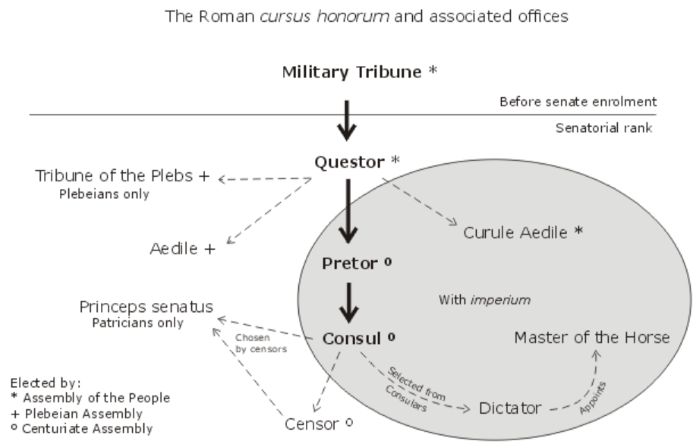
The Cursus Honorum, or “course of honors,” was the formalized sequence of public offices held by aspiring Roman statesmen during the Republic. Far more than a mere career ladder, it was a central organizing principle of Roman political life, intended to create a structured and merit-based (albeit aristocratic) path to power. Though it evolved over time and was never entirely rigid in its application, by the late Republic it had become an established series of magistracies through which elite Roman men had to progress. These offices—quaestor, aedile (optional), praetor, and consul—were bound by legal age requirements, intervals between offices, and the principle of cumulus prohibitus (prohibiting the holding of multiple major offices simultaneously). The Cursus Honorum not only institutionalized a progression of increasing administrative, judicial, and military responsibility but also reinforced Republican ideals such as collegiality, annuality, and accountability. It served both as a filter for competence and as a means of sustaining the dominance of the Roman nobility through formalized political competition.
The Cursus Honorum began with the quaestorship, typically attained in a man’s early thirties after ten years of military service. Quaestors were financial officials who assisted consuls and provincial governors, managed the state treasury, and maintained public records. Though a relatively low-ranking position, election to the quaestorship granted entry to the Senate, making it a crucial threshold into Rome’s political elite. After quaestorship, many sought the aedileship, though it was not required. Aediles (of whom there were curule and plebeian varieties) were responsible for urban maintenance, market regulation, and organizing public games—roles that allowed for visibility and popularity. Ambitious aediles often invested large personal sums into lavish games (ludi), using their tenure to build public favor ahead of future elections. This expectation of personal expenditure from officeholders speaks to the highly competitive and self-promoting nature of Roman political culture, in which office was both a duty and a means to personal distinction.
Praetorship came next, typically around a man’s late thirties, and marked the assumption of imperium, the right to command armies and exercise judicial authority. Praetors oversaw Rome’s courts, administered civil law (praetor urbanus) and foreigner cases (praetor peregrinus), and in times of need could be assigned military commands or govern provinces. Following their term, praetors were commonly sent as propraetors to oversee provincial administration, further extending the reach of Roman law and governance. The apex of the Cursus Honorum was the consulship, the highest regular magistracy in the Republic. Consuls, elected annually in pairs, presided over the Senate and assemblies, commanded armies, introduced legislation, and had the final word in many aspects of state policy. Holding the consulship was the definitive mark of achievement in a Roman aristocrat’s career and ensured inclusion in the nobilitas, the elite stratum of Rome’s political class.
Above the consulship lay only a few exceptional offices, such as the censorship and the dictatorship. Censors, elected every five years from among former consuls, conducted the census, revised the Senate’s membership, and maintained public morals. Though lacking imperium, their role was vital in shaping the moral and institutional framework of Roman society. The dictatorship was an extraordinary magistracy granted during times of acute crisis, with near-absolute authority for a maximum of six months. While these offices were not part of the standard Cursus Honorum, they were typically attained by those who had already climbed the full ladder. The Cursus Honorum thus functioned not only as a bureaucratic and military training ground but also as a mechanism for preparing the Republic’s most trusted leaders for exceptional service. It channeled elite ambition into structured public service, balancing personal glory with constitutional limits.
The Cursus Honorum was more than a set of offices—it was a framework for public virtue (virtus), honor (honor), and competition (ambitio) within Rome’s aristocratic political culture. It embodied the Republic’s ideals by promoting civic responsibility, honoring age and experience, and discouraging lifelong monopolization of power. However, it also reinforced oligarchic control, as the path to office was largely restricted to wealthy, well-connected patricians and nobiles. During the late Republic, as military success and populist appeal began to challenge traditional norms, the Cursus Honorum came under strain. Ambitious figures like Marius, Pompey, and Caesar exploited or circumvented its rules, accumulating multiple consulships or military commands without observing legal intervals. Nevertheless, even amid such disruption, the Cursus Honorum retained immense symbolic and institutional authority. Its structure continued to influence administrative hierarchies into the imperial period, where Augustus redefined many of its elements to fit a monarchical framework while preserving its Republican facade.
Legal Framework and Jurisprudence
The Development of Ancient Roman Law
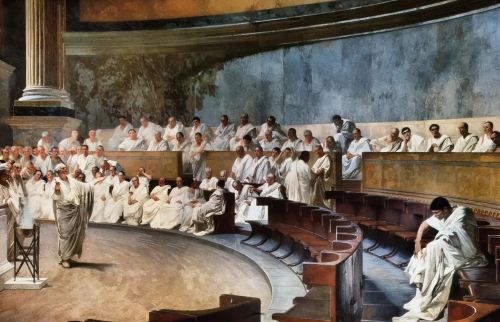
The development of Roman law was a gradual yet profoundly influential process that spanned over a millennium, beginning in the early Republic and continuing into the late Empire. Roman law emerged not merely as a tool for regulating civic life but as a cornerstone of Roman identity and governance. Initially rooted in custom and aristocratic control, early Roman law was largely unwritten and manipulated by the patrician elite. This changed with the codification of the Twelve Tables in 451–450 BCE, a landmark moment in Roman legal history. Prompted by plebeian demands for transparency and legal equity, the Decemviri—a special commission of ten men—was appointed to write down the laws. The result was the Lex Duodecim Tabularum, which established basic principles concerning property, contracts, family law, and civil procedure. Although these laws were crude and limited by later standards, they marked a turning point: from this moment onward, Roman law would be a public, written instrument accessible to citizens, and not solely a weapon of aristocratic discretion.
Following the Twelve Tables, the Roman legal system entered a phase of elaboration and institutional development during the middle Republic. Central to this evolution was the role of the praetor, a magistrate who administered civil justice and interpreted the law. The praetor urbanus, in particular, developed a flexible legal edict—the Edictum Praetoris—which outlined the remedies and legal actions available during his term. Although it was initially renewed or modified each year, over time a standardized perpetual edict emerged, reflecting accumulated legal precedent. This judicial creativity allowed Roman law to remain adaptable, gradually incorporating new principles, procedures, and protections. It also contributed to the system’s sophistication, distinguishing between formal law (ius civile) applicable to Roman citizens, and the more universal ius gentium, or “law of nations,” which applied to interactions involving non-citizens and facilitated Rome’s growing engagement with foreign peoples and commercial exchange. The ius gentium exemplified Rome’s ability to blend rigidity with pragmatism, enabling it to administer an increasingly diverse empire.
By the late Republic, legal expertise had become an intellectual and professional pursuit, resulting in the emergence of jurists (iurisprudentes) who were not magistrates but legal scholars. These jurists interpreted law, advised magistrates, and issued legal opinions (responsa), helping to clarify and systematize the growing body of statutes, senatorial decrees, edicts, and customary law. Prominent figures such as Scaevola and Cicero contributed to the theoretical and rhetorical refinement of Roman legal thought. Their work laid the foundation for a body of ius honorarium—law derived from magisterial edicts—that functioned alongside the older ius civile. This dual legal tradition allowed for both conservatism and innovation. The Republic also saw increasing legislative activity, with laws passed by popular assemblies and later ratified by the Senate, such as the Lex Hortensia of 287 BCE, which granted binding legislative power to the plebeian assembly. Yet as political turbulence intensified, especially in the late 1st century BCE, legal procedures became increasingly politicized, manipulated by powerful individuals for partisan or personal ends.
Under Augustus and the early Empire, Roman law underwent a process of centralization and imperial codification. The chaotic legislative processes of the Republic were streamlined, with senatorial decrees (senatus consulta) and imperial commands (constitutiones principum) replacing the traditional laws of the assemblies, which fell into disuse. Emperors took on the role of supreme lawmakers, while the Senate and jurists continued to function in a consultative capacity. Jurists such as Gaius, Ulpian, and Papinian flourished during the Principate and Severan periods, contributing to the development of a more coherent and authoritative legal corpus. These scholars systematized legal categories, distinguished between public and private law, and shaped doctrines that would remain foundational in legal history. Roman law began to move toward a more rational and universal system, exemplified by efforts like the lex Julia reforms of Augustus, which addressed marriage, adultery, and inheritance, all reflecting the emperor’s moral and administrative agenda.
The culmination of Roman legal development occurred in the later Empire with the codification efforts of the emperors, particularly during the reign of Justinian I in the sixth century CE. Although technically post-classical, Justinian’s Corpus Juris Civilis (Body of Civil Law) was the synthesis of centuries of Roman legal thought and administration. This monumental compilation included the Codex (imperial constitutions), the Digest or Pandects (legal writings of classical jurists), the Institutes (a legal textbook for students), and the Novellae (new laws issued after the Codex). While created long after the fall of the Western Roman Empire, this legal codification became one of Rome’s most enduring legacies, influencing medieval and modern legal systems across Europe and beyond. Thus, Roman law evolved from an aristocratic set of customs into a highly rationalized and adaptable body of jurisprudence. It served not only as a mechanism for resolving disputes but also as an instrument of imperial control, social order, and civic identity across a vast and heterogeneous empire.
The Twelve Tables and Beyond
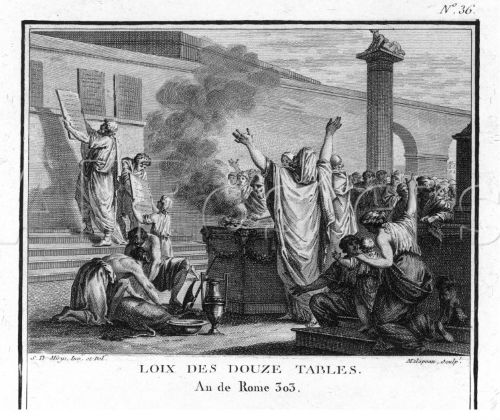
The Twelve Tables (Lex Duodecim Tabularum) stand as one of the most significant landmarks in the development of Roman law, marking the transition from unwritten customs to a formalized, written legal code. Traditionally dated to 451-450 BCE, the Twelve Tables were the result of years of plebeian agitation for legal transparency and fairness, an issue that had been at the heart of the Conflict of the Orders between the plebeians and the patricians. Before their creation, the law had been in the hands of the patrician elite, who used their monopoly on legal knowledge to maintain power over the plebeians. The decision to codify Roman law was made by the Decemviri—a commission of ten men chosen to draft a written legal code. The Twelve Tables covered a wide range of legal issues, including family law, property rights, procedural law, and penalties for crimes, and they were publicly displayed in the Roman Forum, making them accessible to all citizens. The Tables were a step toward legal equality in Rome, but they also reflected the inequalities of Roman society, with harsh penalties and provisions that clearly favored the elite, while offering little protection for the lower classes or slaves.
Though the Twelve Tables were groundbreaking in their attempt to make Roman law more transparent, they remained deeply rooted in the social and economic realities of early Roman society. For example, the Tables allowed for harsh physical punishments, including death, for certain crimes such as theft or perjury, and they sanctioned debt bondage, a practice that was later to become one of the major sources of tension between the plebeians and the patricians. Some of the provisions also reflect the deeply patriarchal nature of Roman society; for instance, the head of the family (the paterfamilias) held nearly absolute control over the lives of his wife, children, and slaves. Nevertheless, the Twelve Tables represented an important shift in Roman legal thought, as they introduced the principle that laws must be publicly known and apply to all citizens. Over time, they would provide a foundation for the development of more complex legal structures, but their content, particularly in terms of criminal justice, remained fairly rudimentary and often overly harsh by later standards.
Following the Twelve Tables, Roman law continued to evolve, particularly through the work of magistrates, legislators, and legal experts. The early Republic saw the development of a more flexible legal system, exemplified by the role of the praetor in shaping the law. The praetor urbanus, one of the highest-ranking magistrates, developed an annual edict (edictum praetorium) that supplemented the Twelve Tables and addressed the changing needs of Roman society. The praetor’s edict became a vital part of the Roman legal tradition, as it introduced the concept of ius honorarium, or the law developed through the actions of magistrates, in contrast to the ius civile (the civil law that was derived from the Twelve Tables). Through the edict, the praetor established new forms of legal remedies and procedures, including the actio (a legal action or lawsuit), which were crucial in addressing the growing complexity of Roman society. While the Twelve Tables had established basic legal norms, the praetor’s edict allowed Roman law to be dynamic, capable of adapting to new circumstances and offering more individualized solutions to legal disputes.
By the late Republic, Roman law had evolved significantly beyond the Twelve Tables, with an expanding body of legal scholarship and a growing professional class of jurists. Legal experts (iurisprudentes) began to play a pivotal role in shaping the law through their interpretation and application of existing statutes and precedents. These jurists, often elite members of Roman society, provided legal opinions (responsa) that were influential in both public and private law. Figures such as Publius Mucius Scaevola, Servius Sulpicius Rufus, and Cicero were among the most renowned jurists of the era, and their work laid the foundation for the systematic development of Roman legal principles. This period also saw the rise of the ius gentium, or the “law of nations,” a set of legal principles derived from Roman practice but designed to govern interactions between Roman citizens and foreign peoples. The ius gentium reflected the growing influence of Rome as a dominant Mediterranean power and introduced more universal concepts of justice, rights, and international law, which were later incorporated into the legal tradition of many European countries.
The importance of the Twelve Tables and their legacy was never fully eclipsed, even as Roman law grew more sophisticated under the Empire. During the reign of Augustus and his successors, legal codification became a central element of imperial governance. However, it was not until the reign of Justinian I in the sixth century CE that Roman law was fully systematized and codified in the form that would influence later legal traditions. The Corpus Juris Civilis, compiled under Justinian’s orders, included the Codex (a collection of imperial constitutions), the Digest (a compilation of the opinions of jurists), the Institutes (a legal textbook), and the Novellae (new laws passed after the Codex). The Corpus Juris Civilis represented a monumental achievement in the history of law, preserving and consolidating centuries of Roman legal thought, and it became the foundational text for legal education and practice throughout the Byzantine Empire and later in medieval Europe. While the Twelve Tables themselves remained an important symbolic foundation of Roman law, they were expanded, refined, and sometimes superseded by these later developments, which ensured that the core principles of Roman law would endure for centuries to come.
Praetors and Legal Administration
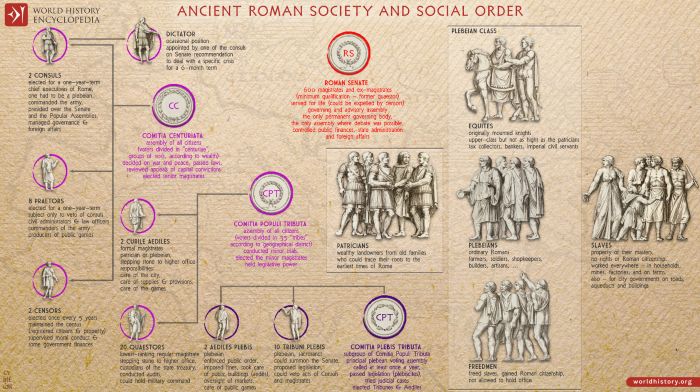
The praetor was one of the most influential magistrates in the Roman Republic and later the Empire, particularly in terms of legal administration. The office of the praetor was established in 366 BCE, and over time, it evolved from a military and judicial role to one focused almost exclusively on the administration of civil law. Initially, there were only one praetor (later called the praetor urbanus) responsible for the legal matters of Roman citizens. By the late Republic, however, additional praetors were elected to handle different aspects of legal administration, including the praetor peregrinus, who dealt with legal issues involving foreigners. The praetor’s primary responsibility was overseeing the ius civile, the body of law governing relations among Roman citizens, and administering justice in courts. The praetor was expected to resolve disputes, enforce contracts, and provide remedies for wrongs, often serving as the central figure in the legal system that ensured justice was delivered according to Roman standards.
One of the most important contributions of the praetor to Roman legal administration was the development of the praetor’s edict (edictum praetorium). This annual proclamation outlined the rules, legal actions, and remedies available under the praetor’s authority, and it had the effect of supplementing the Twelve Tables and other established legal codes. The praetor could modify or create new legal procedures to address emerging issues, making the law more flexible and responsive to the needs of Roman society. For example, the praetor’s edict provided a detailed framework for civil litigation, allowing the praetor to prescribe specific actions for resolving cases and disputes, such as the actio (legal action) or condictio (action for the recovery of a sum of money). This edict was not a fixed body of law but rather a set of guiding principles, which could evolve year by year as different magistrates adapted it based on their experience and the political and social circumstances of their time. In essence, the praetor’s edict was a tool for legal innovation, one that allowed Roman law to remain dynamic and adaptable in an ever-changing society.
In addition to their legislative role, praetors were also crucial to the judicial system, serving as judges in the courts. The praetor urbanus presided over legal disputes between Roman citizens, while the praetor peregrinus dealt with cases involving non-citizens, particularly foreigners or aliens (peregrini). In their judicial capacity, praetors did not make decisions according to personal judgment but rather based on existing legal norms, interpreting the law and applying it to the facts of the case. However, the praetor was also responsible for ensuring that cases were heard and decided in a manner that reflected fairness and justice, sometimes appointing judges (iudices) to assist in specific trials. Praetors had the discretion to issue legal remedies, such as injunctions or the appointment of temporary guardians, to preserve the status of the parties involved pending a final decision. This flexibility in judicial action made the praetor’s role central to the efficient functioning of Roman legal administration, ensuring that the legal system could address disputes in a way that was both practical and equitable.
The praetor’s role also became increasingly significant as the Roman Republic expanded and Roman law was applied to a more diverse population. As Rome’s territorial holdings increased, so did the number of interactions between Roman citizens and non-citizens, or between different provinces of the empire. To address the legal complexities of these interactions, the praetor peregrinus was given the task of administering justice in cases involving foreigners, and the development of the ius gentium (the law of nations) became one of the key contributions of Roman law. This body of law dealt with issues that arose between Roman citizens and foreign nationals or between foreign nationals themselves, such as trade disputes, contracts, and crimes committed in foreign territories. In doing so, the praetor played a pivotal role in shaping a more universal legal framework that could transcend Roman society and govern interactions within the broader Mediterranean world. By crafting legal principles that could be applied to foreign interactions, praetors helped create a legal system that was flexible, cosmopolitan, and adaptable to the needs of an expanding empire.
During the later periods of the Republic and into the early Empire, the role of the praetor in legal administration became even more crucial as the Roman state grew more complex. The growing power of the emperors, particularly during the reign of Augustus, led to a shift in how Roman law was administered, with the emperor assuming greater control over the legal system. Despite this, the office of the praetor continued to play an important role in Roman legal life, especially in terms of procedural law. The praetor’s edict was preserved and became an essential part of the legal landscape, with jurists and legal scholars such as Gaius and Papinian building upon it. The praetor was no longer the sole authority in legal matters, but the office was retained as a key component of the Roman legal tradition. In particular, the praetor’s ability to issue legal remedies that were both innovative and practical allowed Roman law to remain adaptable, even as the empire’s needs became more complex. The praetor’s judicial function was eventually absorbed into the imperial court system, but the legacy of this magistracy lived on in the structure of Roman law, shaping legal practices and systems well into the medieval period.
Roman Provincial Administration
Provinces under the Republic and Empire
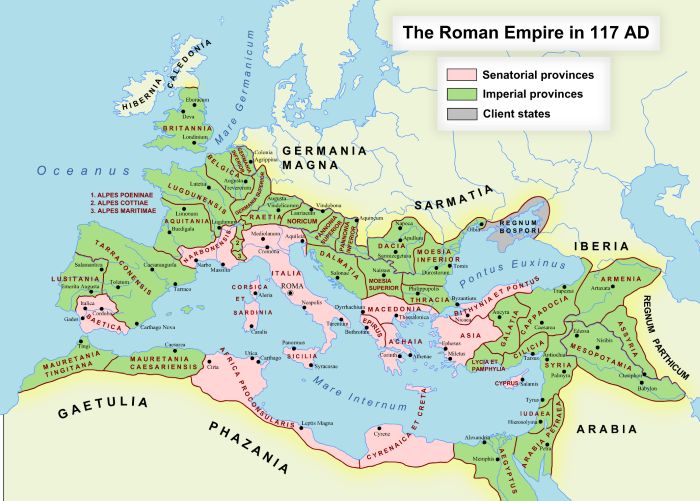
Under both the Roman Republic and Empire, provinces were crucial to the Roman political and economic system. Initially, the term “province” referred to any area of Roman dominion where a Roman magistrate was assigned to govern. The concept emerged as the Roman Republic began expanding its influence beyond the Italian peninsula in the 3rd century BCE. The first formal provinces were created after Rome’s victories in the Punic Wars, especially the conquest of Sicily in 241 BCE, followed by the acquisition of Sardinia and Corsica. Initially, provinces were regions outside the core of Italy, whose governance was assigned to a magistrate, typically a consul or praetor. These provinces were intended to provide Rome with resources and manpower to fuel its growing military and political power. In its early stages, provincial governance was relatively informal and shaped by Roman military and commercial interests.
By the mid-Republic, Roman provinces were more systematically structured. The primary role of a provincial governor was military oversight, as provinces were often newly conquered territories that required protection and consolidation. These governors, known as proconsuls or propraetors, were usually elected magistrates who had completed their terms in Rome and were assigned to govern a specific province. They had broad authority, including military command, judicial powers, and administrative functions. However, their actions were often subject to the oversight of the Senate, and their tenure in office could be marked by political tensions, especially in provinces with strategic importance or resources. The Senate, particularly through the Senatus consulta, determined the assignment of governors and the scope of their powers. While the Romans sought to impose Roman laws and institutions in their provinces, they often allowed local elites to retain power in a system of indirect rule, with Rome establishing a complex balance between direct control and local autonomy.
As Rome’s empire expanded, the province system became more organized and structured under the rule of Augustus. Following the turmoil of the late Republic, the first emperor introduced significant reforms to the provincial administration. Augustus reorganized the provinces into two broad categories: senatorial provinces and imperial provinces. The senatorial provinces were governed by proconsuls, who were typically former consuls and had a relatively high degree of autonomy. These provinces were usually peaceful and required less direct military oversight. On the other hand, imperial provinces were directly controlled by the emperor and governed by legates, who were appointed by the emperor and often held greater military responsibilities due to the provinces’ volatile nature or strategic importance. This division of provinces laid the foundation for the highly organized provincial structure that would define the Roman Empire for centuries.
The importance of provincial governors, both consuls and legates, became even more pronounced during the imperial period. Provincial governors held immense power, and their actions could have far-reaching effects on the empire. Governors had the authority to collect taxes, oversee public works, maintain law and order, and lead military campaigns. They were also responsible for administering justice in their provinces, and their decisions were often final unless appealed to the emperor. However, their power was not absolute. The emperor and the Senate maintained some oversight, and governors were sometimes recalled if they were deemed corrupt or inefficient. Over time, provincial governors became more closely tied to the imperial system, as their political careers often depended on imperial favor. In some cases, the actions of a single governor, whether through military conquest or economic exploitation, could reshape the history of an entire province.
Roman imperialism profoundly impacted the provinces economically. Provinces were key to the expansion and maintenance of Rome’s wealth and military power. Agriculturally, many provinces became the breadbasket of the empire, producing grain, olive oil, and wine, which were essential to Roman society. Other provinces provided valuable resources such as silver, gold, timber, and precious metals. Roman provinces were often subjected to heavy taxation, which was the primary source of revenue for the empire. This system was generally effective, but it could also be exploitative, particularly in provinces that resisted Roman rule. The Roman system of taxation varied across provinces, with taxes often levied on land, property, and goods, and the collection of taxes was typically managed by Roman officials or tax contractors. In some provinces, such as Egypt, taxation was more rigidly controlled, with the emperor personally overseeing revenue collection. In others, like Hispania, local elites were allowed to manage their own taxation systems under Roman supervision.
The legal system in the provinces, while based on Roman law, allowed for local variations that reflected the customs of the native populations. In many provinces, Roman governors and magistrates sought to maintain peace by integrating local legal practices with Roman laws. For instance, Roman officials would often rely on local aristocracies to administer the day-to-day legal functions and would only intervene in cases of serious civil unrest or political matters. In this way, Roman rule was often indirect, with local elites serving as intermediaries between the central Roman government and the provincial populations. While Roman law provided a consistent framework for the empire, the interpretation and application of this law could vary depending on local customs and the discretion of provincial governors.
The military presence in the provinces was another defining characteristic of Roman provincial administration. Roman legions were stationed in various provinces, particularly in frontier areas, to protect Roman territory from invasions or rebellions. This military presence helped ensure Roman control over vast regions and provided a visible symbol of Roman power. The Roman army played an integral role in both securing and expanding the empire, particularly along the borders of the empire, such as in Britain, Germania, and the Danube region. Additionally, veterans were often given land in the provinces after their service, which encouraged Romanization—an ongoing process of cultural assimilation whereby local populations adopted Roman customs, laws, and languages. Veterans and their descendants would settle in the provinces, establishing Roman-style towns and villages that further solidified Roman control.
Over time, the Roman provinces grew increasingly diverse in terms of both ethnic composition and governance. While many provinces were initially populated by non-Roman peoples, the process of Romanization spread Roman culture, language, and governance across the empire. In cities such as Alexandria, Carthage, and Ephesus, the influence of Roman law, culture, and infrastructure was unmistakable. Roman cities were constructed with advanced engineering, including forums, temples, aqueducts, and roads, and Roman citizenship was extended to some local elites. The extension of Roman citizenship to provincials in the late Republic and early Empire was a significant development, as it created a more unified imperial identity. However, despite the spread of Roman culture, local traditions, languages, and religions remained prevalent in many regions. Roman administration often had to strike a delicate balance between imposing Roman norms and respecting local customs and practices.
The provinces also played a central role in the political and military power struggles of the later Empire. As the Roman Empire grew in size, the provincial governors and military commanders became key players in imperial politics. During the third century CE, a series of military crises and political instability led to the rise of powerful provincial generals who competed for control of the empire. The military, which was stationed in the provinces, became increasingly involved in the selection of emperors, as generals with strong support from their troops would often declare themselves emperor. This period of crisis, known as the Crisis of the Third Century, highlighted the importance of provincial military power in the maintenance of Roman imperial control. As the Western Roman Empire weakened, the provinces in the East, such as Egypt and Asia Minor, remained relatively stable under imperial control, with their strategic importance only increasing.
The fall of the Western Roman Empire in 476 CE marked a profound change in the status of the provinces. As the central authority in Rome disintegrated, many of the provinces fell under the control of Germanic tribes, such as the Visigoths and Vandals. The eastern half of the empire, however, continued to thrive under the Byzantine Empire, where provincial governance remained more centralized and Roman traditions were preserved. The role of provinces in governance evolved but remained essential for maintaining imperial power, whether in the remnants of the Roman Empire or in successor states that adopted Roman administrative practices. Ultimately, the provinces under both the Republic and Empire were not just administrative units but integral parts of a vast political, economic, and cultural system that defined the Roman world.
Governors and Local Elites
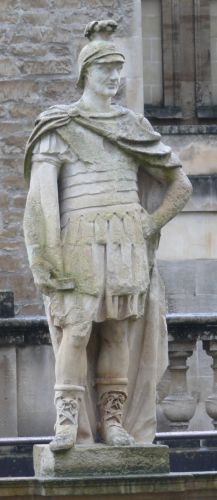
The role of governors and local elites in ancient Rome was crucial to the administration and stability of the vast Roman Empire. Governors were typically appointed by the Senate or the emperor, depending on whether the province was senatorial or imperial. Their responsibilities were extensive, encompassing military command, judicial authority, and economic oversight. Governors, often former consuls or praetors, were chosen for their experience in Roman governance and military matters. Upon arrival in their assigned provinces, governors were tasked with maintaining order, administering Roman law, ensuring the collection of taxes, and overseeing public works and infrastructure. The power of the governor was immense, with the ability to levy taxes, appoint local officials, and sometimes even enforce capital punishment. Governors were expected to balance the interests of the Roman state with the demands of their provinces, ensuring Roman hegemony while preventing local uprisings and preserving the loyalty of the population.
Local elites, typically from the indigenous aristocracy of the provinces, played a complementary yet indispensable role in the administration of Roman territories. While the governor was the direct representative of Roman authority, local elites served as intermediaries between Roman officials and the native population. These elites, who often retained significant power and wealth in their communities, were crucial to the day-to-day governance of Roman provinces. By collaborating with Roman authorities, local elites could maintain their status and influence within their own societies while also participating in the broader Roman political system. Many of these elites were granted Roman citizenship and privileges, particularly as part of the broader process of Romanization. In return for their loyalty to Rome, they were often given important roles in local governance, such as serving as magistrates, city council members, or in some cases, becoming provincial governors themselves.
The relationship between governors and local elites could be a double-edged sword, as it was shaped by both cooperation and competition. Governors relied on local elites for practical assistance in administering their provinces, particularly when it came to the management of local resources, military recruitment, and maintaining law and order. In many cases, local elites were instrumental in collecting taxes and ensuring compliance with Roman decrees, and they often held judicial powers within their cities. However, this relationship could also be strained. Governors, particularly those sent to provinces with restive populations, sometimes viewed local elites with suspicion, considering them potential rivals for power. Conversely, local elites often resented Roman interference and the power wielded by governors, especially if their autonomy was restricted or if Roman policies undermined their local authority. This tension was most apparent in the provinces that were more resistant to Roman rule, where local elites could serve as either allies or adversaries, depending on the political circumstances.
In addition to their administrative roles, governors and local elites were central to the process of Romanization, the spread of Roman culture, law, and social practices across the empire. Roman elites often encouraged local aristocrats to adopt Roman customs, such as wearing Roman clothing, participating in Roman-style religious practices, and speaking Latin. This process was particularly evident in regions like Gaul, Hispania, and North Africa, where local elites played a significant role in the transition from provincial cultures to Roman identity. By adopting Roman ways of life, these elites secured their positions of power within Roman society and facilitated the integration of their territories into the broader Roman world. In return, Rome provided them with military protection, political privileges, and opportunities for personal advancement. The local elites often used their status to gain positions within Roman political structures, including the Senate, and some even attained the highest honors, such as the consulship, after serving as provincial governors.
Despite the central role that governors and local elites played in maintaining Roman control over the provinces, this system also had its limitations. The imperial bureaucracy, particularly under the early emperors, was decentralized, and the power of provincial governors and local elites could sometimes undermine the stability of the Roman state. Corruption, abuse of power, and exploitation of the local population by governors and elites were common, especially in provinces far from Rome. The vast size of the empire and the difficulty of communication made it challenging for the emperor or Senate to maintain direct oversight of provincial affairs. As a result, local elites often acted with considerable autonomy, sometimes in ways that were at odds with Roman imperial interests. Governors, particularly in frontier provinces or regions of rebellion, might engage in military campaigns, economic exploitation, or diplomatic dealings with local rulers that were not always sanctioned by the imperial government. These actions, while sometimes beneficial in the short term, could also fuel unrest and lead to a breakdown of Roman authority, highlighting the delicate balance between central Roman control and local autonomy.
Managing Taxes and Resources
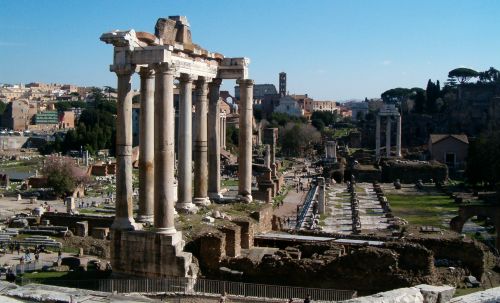
Taxation and resource management in ancient Rome were central to the functioning of the Roman Empire, enabling it to support its vast military, infrastructure, and administrative apparatus. Roman taxation was varied and complex, reflecting the diversity of the empire’s territories, the social hierarchies within Roman society, and the empire’s economic needs. Taxes were primarily levied on land, goods, and individuals, and their collection was crucial to the Roman state’s financial stability. Land taxes were the most common form of taxation and were assessed based on the amount of land a person owned, with rural provinces often bearing the heaviest burden. The tributum was the principal land tax, but there were also taxes on individuals, such as the centesima rerum venalium, a sales tax of 1% levied on goods sold at auction, and the vicesima hereditatium, a 5% inheritance tax imposed on estates. In addition to land and inheritance taxes, a series of indirect taxes on goods like wine, oil, and grain were implemented, further supplementing the empire’s coffers.
The Roman Empire also relied on tax collectors, known as publicani, to gather these revenues. The publicani were often private contractors, who bid for the right to collect taxes in specific provinces. This system of tax farming had its advantages in terms of efficiency, as it allowed the empire to delegate responsibility for tax collection to individuals or groups that could manage it more directly. However, it also led to significant abuses, as the publicani often extracted more than the required taxes from the local population, pocketing the difference. These abuses were particularly prevalent in the provinces, where Roman officials had less oversight, leading to widespread resentment and occasional uprisings. While the Roman state eventually attempted to regulate tax collection by establishing more direct oversight, especially under the emperors, the practice of tax farming remained a key feature of Roman revenue generation for much of the empire’s history.
Resource management in the Roman Empire went hand-in-hand with its tax policies, as the empire’s ability to manage its resources was vital to its military and economic strength. The Roman government actively managed agricultural production, mineral extraction, and trade to ensure a steady flow of resources into the empire’s economy. Provincial governors were responsible for ensuring that local resources—such as grain in Egypt, olive oil in Hispania, or timber in Gaul—were efficiently harvested and sent to Rome or other key urban centers. Grain, in particular, was a crucial resource, as it was used both to feed the Roman population and to maintain the food supply for the military. The annona, a system of grain distribution, played a key role in managing the supply of food to Rome and other cities. It involved state-controlled granaries, which stored grain from the provinces, ensuring that Rome, especially during times of crisis, would not face famine. The government also regulated the importation and exportation of goods, particularly those that were vital to the imperial economy, such as grain, olive oil, and wine.
The management of precious metals and the imperial treasury was also an important aspect of resource management in Rome. The Roman state maintained control over the mining of gold, silver, and other valuable materials, which were essential not only for the minting of coins but also for paying the military and financing public works projects. Provinces like Hispania and Gaul were rich in precious metals, and the Roman state had established a system of mining operations that directly benefited from imperial control. The vast wealth from these resources was crucial to Rome’s expansionist policies, as it funded the legions that allowed the empire to conquer new territories. These resources also enabled the Roman state to provide for its citizens through public works, such as the construction of roads, aqueducts, temples, and amphitheaters, which further cemented Rome’s dominance in the ancient world. The imperial treasury, which collected these revenues, was managed by officials such as the quaestors and praetors, who ensured that tax revenues were used effectively to fund the empire’s military, infrastructure, and social programs.
Another key aspect of resource management was the infrastructure that supported Roman taxation and resource distribution. Roman roads, ports, and storage facilities were essential for transporting and managing the empire’s resources. The construction and maintenance of the road network, for example, were vital for the rapid movement of armies, the delivery of taxes, and the transportation of goods. Roman engineers designed roads that were durable and efficient, facilitating both military operations and trade across vast distances. Similarly, the Roman Empire boasted an extensive system of ports, particularly in areas such as Ostia (Rome’s main harbor), Alexandria, and Carthage, which served as hubs for the importation of grain and other critical resources. These ports enabled Rome to maintain a steady flow of goods and resources from its provinces, ensuring the empire’s economy remained robust and capable of sustaining its military endeavors. The control of these infrastructures allowed Rome to not only manage its resources effectively but also exert power and influence over the provinces by controlling vital trade routes and economic hubs.
Taxation and resource management were the backbone of the Roman Empire’s economic and military success. The complex tax system ensured that Rome could fund its military campaigns, support its growing population, and maintain its impressive infrastructure. Local elites and provincial governors played key roles in the collection and management of resources, while the Roman state exercised control over key industries, such as agriculture, mining, and trade. Though the Roman taxation system was often harsh and led to exploitation, it allowed the empire to thrive and expand across the Mediterranean world. Effective resource management, particularly in the areas of food production and precious metals, enabled Rome to maintain its military power and sustain its cultural and political dominance for centuries. The extensive network of roads, ports, and granaries ensured that Rome could efficiently administer its resources and maintain its empire, solidifying the legacy of one of the greatest empires in history.
Military Administration
The Structure of the Roman Army
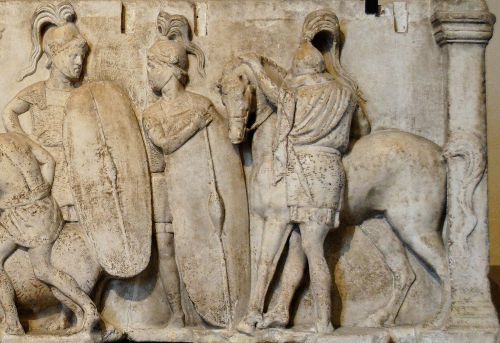
The structure of the Roman army was one of the key components of the Roman Empire’s ability to expand, defend, and maintain control over its vast territories. From its humble beginnings as a small city-state’s defense force to becoming one of the most formidable military organizations in history, the Roman army underwent significant structural changes over the centuries. The Roman military was organized not only for battle but also for administrative efficiency, enabling Rome to project power across the Mediterranean and beyond. The army’s structure was characterized by its hierarchy, flexibility, and ability to adapt to different tactical needs, making it a central factor in Rome’s success.
At the heart of the Roman army’s structure was the legion, the basic unit of the military force. A legion typically consisted of about 4,000 to 6,000 soldiers, depending on the period. These soldiers were primarily infantry, trained for a wide range of combat scenarios, including hand-to-hand fighting, siege warfare, and battlefield tactics. The Roman legion was subdivided into smaller units, which allowed for greater flexibility and control in combat. Each legion was made up of ten cohorts, and each cohort consisted of around 480 men. The legion’s basic organization was designed for both offense and defense, allowing it to adapt quickly to different battlefield situations. The Roman legions were known for their discipline, precision, and use of formations, such as the famous testudo (tortoise formation), which made them nearly invincible in battle.
Within the legion, the soldiers were organized into different ranks, each with specific roles and responsibilities. The legionaries, the basic foot soldiers of the Roman army, formed the backbone of the military. They were heavily armed with a short sword called a gladius, a javelin known as a pilum, and a shield (scutum) that was large enough to provide significant protection. Roman soldiers were highly trained and disciplined, with rigorous training regimens that included physical conditioning, weapon training, and tactical drills. Above the legionaries were the centurions, who commanded groups of about 80 men within a century, the basic unit of Roman combat. The centurion was a highly respected position, often a veteran soldier who had worked his way up through the ranks. Centurions were responsible for maintaining discipline, ensuring that soldiers followed orders, and leading their units into battle.
In addition to the legionaries and centurions, the Roman army relied heavily on other specialized units, including cavalry and archers. The cavalry was typically stationed on the flanks of the army, providing mobility and support to the infantry. Roman cavalry units, called equites, were generally recruited from the wealthier classes of Roman society or from allied provinces. They played a key role in reconnaissance, pursuing fleeing enemies, and providing support during battles. In the later stages of the empire, cavalry units grew in importance, especially as the Roman army increasingly relied on mounted forces for both offensive and defensive operations. Archers, on the other hand, were used for ranged combat, often deployed to harass the enemy from a distance before the legionaries engaged in close-quarter battle. Although less emphasized in the early phases of Roman military history, specialized archers and slingers played increasingly important roles in the empire’s battles as the Roman army evolved.
The Roman army was known for its impressive siege capabilities. A dedicated corps of engineers and siege specialists was integral to the army’s operations, particularly in the conquest of fortified cities. Roman engineers were skilled at constructing siege weapons such as battering rams, catapults, and ballistae (large crossbow-like weapons), and they were also adept at building siege ramps, tunnels, and fortifications. The Roman army’s ability to conduct prolonged sieges, often using a combination of psychological warfare and the systematic destruction of enemy fortifications, made it highly effective in warfare. The army’s logistics units were similarly well-organized, ensuring that troops had the supplies they needed to endure long campaigns. These logistics units were responsible for transporting food, weapons, and equipment, often using a complex system of supply depots and military roads to ensure timely delivery to the front lines.
The command structure of the Roman army was hierarchical, with different levels of leadership overseeing various parts of the force. The overall command of the Roman army, especially during the Republic, rested with elected officials known as consuls, who were typically military leaders. In times of crisis, a dictator could be appointed with absolute authority over the army. However, as the empire progressed, the emperor became the supreme commander of the Roman military, holding ultimate control over both the legions and other military branches. Beneath the emperor, the military command was divided among several key officers. The legate (or legatus) was a high-ranking officer, often a senator, who was appointed by the emperor to command a legion. Under the legate were the tribunes, who were junior officers, and the centurions, who commanded smaller units within the legion.
Roman military discipline was another key element in the army’s structure. Soldiers were expected to adhere to strict codes of conduct, with harsh punishments for disobedience, cowardice, or desertion. One of the most infamous punishments was the decimation, where one in every ten soldiers in a unit was executed by their fellow soldiers as a punishment for cowardice or mutiny. While brutal, such measures reinforced the Roman army’s reputation for discipline and its ability to maintain order even in the most chaotic of situations. The military discipline of the Roman army was reflected in its training, where soldiers were taught not only how to fight but also how to endure hardship, maintain formation, and work as a cohesive unit.
Roman soldiers were required to serve for a minimum of 25 years, after which they were granted a pension or land as a reward for their service. The long duration of service fostered a strong sense of loyalty and camaraderie among the soldiers, who often had to endure difficult living conditions, including harsh climates, poor food, and disease. The Roman military was also a highly professional force, with soldiers trained to fight in specific formations and to use specialized equipment. The organization of the Roman army allowed for effective recruitment, training, and deployment, and the long service requirements meant that Roman soldiers became highly skilled and experienced over time.
The Roman military was a key component of the empire’s ability to maintain control over its vast territories. Roman soldiers were stationed throughout the empire, both on the frontiers and in the heart of the empire, where they provided protection, suppressed uprisings, and enforced Roman law. Forts (castra) were built along the borders and in strategic locations, providing a permanent military presence in critical areas. These forts were not just military outposts but also centers of Romanization, where local populations were exposed to Roman customs, language, and infrastructure. The presence of the Roman army helped to secure Roman rule and prevent rebellions, ensuring that the empire could function as a unified entity despite the challenges posed by its size and diversity.
The Roman army’s legacy can be seen in the way it influenced subsequent military organizations. The Roman system of organization, from the legion to the auxiliary units, set a standard that was emulated by later military forces throughout history. The Roman military was a model of efficiency, discipline, and organization, and its innovations in tactics, training, and resource management had a profound impact on the development of modern armies. The Roman army’s ability to adapt to different warfare styles, to integrate allied forces, and to maintain a well-structured and disciplined force was essential in its rise to power and its ability to sustain an empire for centuries. Despite the eventual decline of the Western Roman Empire, the structure of the Roman military continued to influence the development of military theory and practice for generations to come.
Recruitment, Logistics, and Command
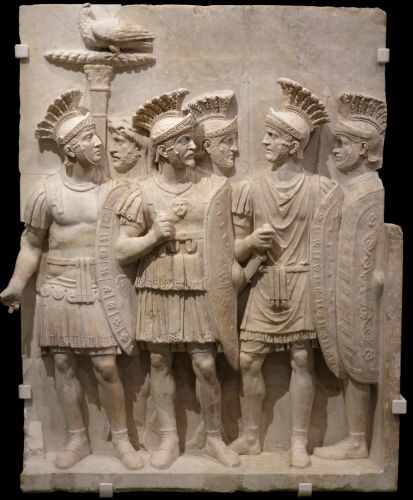
Recruitment, logistics, and command were essential elements of the Roman military that contributed to its remarkable success as an imperial force. Each of these components played a vital role in maintaining a well-organized and efficient army capable of conquering and holding vast territories for centuries. The Roman military’s approach to recruitment ensured a steady supply of soldiers, while its advanced logistics system enabled the army to operate across vast distances and maintain its strength. Meanwhile, the command structure provided the leadership needed to keep the army cohesive, disciplined, and adaptable to the changing nature of warfare.
Recruitment in the Roman army evolved over time, with significant changes from the early Republic to the Imperial period. During the early Republic, military service was based on a system of conscription, where Roman citizens were required to serve in the army based on their social class and wealth. The wealthiest citizens, who owned property, were required to provide equipment and serve as heavy infantry. This system, known as the servius tullius system, also meant that soldiers came primarily from the propertied classes. However, as Rome expanded and faced growing challenges, the army began to rely more heavily on the levy system, where conscription was used to fill the ranks, even among the lower classes. By the late Republic, the Roman army transitioned to a professional standing army, open to all male citizens regardless of wealth. This shift marked a turning point, as soldiers no longer needed to provide their own equipment, and they began to receive regular pay and other benefits. This professionalization of the army laid the foundation for Rome’s military supremacy.
The recruitment process for the Roman army was formalized and overseen by magistrates known as censors or consuls, who had the power to call for a levy or recruitment drive when necessary. Men between the ages of 17 and 46 were eligible for military service, though the exact age range could vary depending on the needs of the state. The Roman army sought soldiers who were physically fit, able to endure long marches, and capable of adapting to a variety of combat situations. In the early years, recruitment was largely voluntary, but as Rome expanded, it became more of a necessity, and the state used various means to compel service. The auxilia, non-citizen soldiers recruited from the provinces, were a key component of the Roman army, especially in the imperial period. These soldiers, often from conquered territories, were granted citizenship upon completing their service, providing a significant incentive for recruitment. This system of granting Roman citizenship also helped to integrate provincial populations into Roman society and solidified loyalty to the empire.
Logistics were a critical element in the success of the Roman military, as the ability to supply an army spread across a vast empire was a monumental challenge. Roman armies were known for their well-organized and efficient logistical systems, which enabled them to sustain long campaigns in diverse environments. The Roman military’s logistics network included a highly organized transportation system, which included roads, ships, and supply depots. Roman engineers built an extensive network of roads that connected all parts of the empire, making it possible for soldiers and supplies to be transported quickly across great distances. The viae, or Roman roads, were meticulously constructed with layers of stone and gravel to provide durable, all-weather routes. The construction of these roads was one of the key reasons that Roman military campaigns could be sustained over long periods, as it allowed for the rapid movement of troops, reinforcements, and supplies.
In addition to the road network, Roman armies also utilized specialized supply units, including those responsible for transporting food, weapons, and other essential materials. A well-functioning supply chain was essential to maintaining an army’s operational readiness. Roman military units had to be self-sufficient during campaigns, and supply depots, known as stationes, were strategically placed throughout the empire to ensure that units could restock their supplies as needed. These depots were located along major military routes and contained food, equipment, and other necessary provisions. For example, grain was particularly important, as it was the staple of the Roman soldier’s diet, and vast quantities of it were stored in these depots. The ability to maintain a steady flow of supplies, often in the face of difficult terrain and long distances, was a major logistical achievement that allowed Roman armies to remain effective and powerful.
Roman military engineers also played a critical role in logistics by building and maintaining infrastructure, including forts, camps, and roads, as well as constructing siege equipment. The fortifications (castra) were essential for the security of Roman armies, particularly on the frontiers of the empire, where they provided a permanent base of operations. These military camps were designed with precision, with a standardized layout that included defensive walls, gates, barracks, and storage facilities. They could be constructed quickly and were crucial in maintaining control over newly conquered territories. Additionally, Roman engineers were responsible for the construction of military roads and bridges, which facilitated the rapid movement of troops and supplies. The advanced logistics capabilities of the Roman military ensured that the army could sustain itself in hostile environments, whether on the frontiers or during extended campaigns far from Rome.
The command structure of the Roman military was highly hierarchical, reflecting the discipline and organization that defined Roman society. At the top of the command structure was the general, or imperator, who held supreme command over the army. During the Republic, the consuls typically held this position, as they were elected to lead military campaigns. In times of crisis, the Romans could appoint a dictator, a single leader with absolute authority, to command the army and resolve the situation. In the imperial period, the emperor became the ultimate military commander, consolidating power over both the army and the empire. Beneath the general were the legate and tribune. The legate was typically a high-ranking officer appointed by the emperor or the Senate to command a legion, while the tribune was a junior officer who acted as an assistant to the legate and had various administrative and leadership responsibilities.
The Roman army’s command structure was designed to ensure efficiency and unity during military operations. The centurions, officers who commanded centuries (groups of around 80 men), were the backbone of Roman military leadership. Centurions were selected for their experience and leadership ability and were highly respected by their soldiers. They were responsible for maintaining discipline, directing troops during battle, and overseeing the daily activities of the soldiers. The centurions were crucial in ensuring that the orders from higher officers were implemented on the ground. They were often veterans who had risen through the ranks, and their experience made them effective leaders in combat. The Roman military was also known for its use of cohorts, each led by a senior centurion or prefect, which allowed for a high degree of flexibility in combat. The cohorts could be deployed in different formations and adapted to a variety of tactical situations, making the Roman army highly adaptable on the battlefield.
The role of the praefectus castrorum, or camp prefect, was another key aspect of the command structure, particularly in the imperial period. This officer was responsible for the logistics and daily functioning of the camp, ensuring that the soldiers had adequate food, equipment, and shelter. The praefectus castrorum played a vital role in maintaining the readiness of the army and ensuring that it could move quickly and efficiently when necessary. This position was typically held by experienced soldiers who had served in various military roles and had gained significant knowledge of military engineering, logistics, and command. The camp prefect’s responsibilities included overseeing the construction and maintenance of the fortifications, as well as ensuring that soldiers were properly trained and equipped.
The Roman army’s command structure also emphasized unity and discipline, which were integral to the military’s success. Orders were expected to be followed without question, and soldiers were trained to operate as a cohesive unit. Roman commanders were highly skilled in battlefield tactics, utilizing formations like the maniple and testudo to achieve victory in combat. Commanders were expected to be able to adapt to changing circumstances on the battlefield and to make quick decisions under pressure. Roman generals, including figures like Julius Caesar and Augustus, were not only military leaders but also skilled politicians, using their military successes to gain political power. The integration of military command with political ambition allowed Roman generals to maintain control over the army while also securing their positions within Roman society.
The Roman military’s recruitment, logistics, and command structures were critical to its ability to maintain an empire that stretched across Europe, Asia, and Africa. The professionalization of the army, the efficient management of supplies, and the hierarchical command system allowed the Roman military to function effectively across vast distances and in diverse environments. From the recruitment of soldiers to the construction of fortifications and the direction of armies in battle, each element of the Roman military contributed to its long-lasting dominance. The organizational structure of the Roman army provided the flexibility and discipline necessary to manage military campaigns, and its legacy can still be seen in modern military organizations today.
Military and Political Overlap
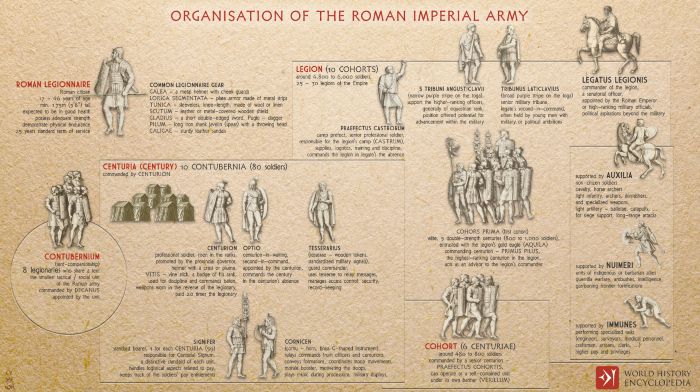
In ancient Rome, the overlap between military and political power was a defining characteristic of the Roman Republic and Empire. The integration of military service with political office was not merely a functional aspect of governance but also a reflection of the way Roman society understood authority, power, and loyalty. Roman political offices, particularly in the Republic, were intrinsically linked with military command, and many political leaders began their careers as military officers. This close relationship between the military and politics ensured that the Roman political system was shaped by military considerations and vice versa. As the Republic transitioned into the Empire, this overlap only grew, with emperors wielding unprecedented control over both military and political matters.
During the Roman Republic, the highest political offices, such as the consuls and praetors, were deeply intertwined with military command. The consuls, elected annually, held imperium, a form of legal authority that gave them control over the military and the power to lead armies in the field. It was common for consuls to be military commanders during their terms, leading Roman forces in wars and campaigns. This system ensured that the political elite had direct control over military decisions, aligning military successes with political legitimacy. Military prowess was often seen as a critical factor for a politician’s career, with victories on the battlefield enhancing a leader’s reputation and credibility in the Senate. The cursus honorum, the sequential order of public offices in the Republic, was also structured around the idea of military experience, with positions like the quaestor and aedile often serving as stepping stones to more prominent military roles.
The close link between military and political roles also had significant implications for Roman politics, particularly in the Senate. Military victories often translated into political power, with successful generals gaining enormous prestige and influence. Figures such as Gaius Marius, Lucius Cornelius Sulla, Julius Caesar, and Pompey the Great exemplified the military-political overlap in Roman society. These men used their military accomplishments to propel their political careers, and many eventually sought to leverage their military success to influence or control political power in Rome. In some cases, such as Caesar’s crossing of the Rubicon in 49 BCE, military action became a direct challenge to the existing political order. The notion of military tribune as a stepping stone to higher political offices also allowed military leaders to gain significant political influence even before formally entering politics, blurring the lines between military authority and political legitimacy.
The Roman army itself was not just a tool of war but also an instrument of political power. Throughout the history of Rome, soldiers often played a direct role in shaping political outcomes. For instance, armies were used to settle political disputes, with soldiers sometimes siding with one political faction or another, tipping the balance of power in favor of their chosen leaders. This was particularly evident during the civil wars of the late Republic, when generals used their legions to fight for political control of Rome. The loyalty of the army to its commander, rather than to the state itself, was a significant shift in the Roman political landscape. This shift culminated in the rise of imperial armies that were directly loyal to the emperor, further cementing the overlap between military and political power. The emperor’s control over the army became central to maintaining political authority, as seen in the reign of Augustus, who combined military supremacy with political rule, ensuring that the military remained loyal to the emperor.
Under the Empire, the political-military overlap took on a more institutionalized and centralized form, with the emperor holding both supreme political and military authority. As emperor, one had the ultimate command over the army, and the power to grant legions to other leaders was a key element of imperial politics. The emperors relied heavily on their military strength to maintain control over the empire, and military commanders, such as provincial governors, were often key political figures. The emperor’s role as imperator, or military commander, was a symbolic title that reinforced the centrality of military power to imperial rule. In this period, the military became an even more decisive political force, as soldiers often played a crucial role in the succession of emperors. The praetorian guard, the emperor’s personal bodyguard, was particularly influential, with its ability to support or overthrow emperors. The intertwined nature of military and political power under the Empire ensured that the military elite was essential in shaping the direction of the empire and maintaining stability.
The intersection of military and political power in ancient Rome had long-lasting effects on the development of Roman governance. The relationship between the two spheres contributed to a political system where the military not only defended the empire’s borders but also shaped its political realities. As the Roman state evolved, the overlap between military and political power became more pronounced, especially under the emperors, where the consolidation of military control in the hands of the emperor allowed for greater centralization and stability. However, this centralization also meant that the military was indispensable to the survival of the empire, with military coups and civil wars often determining the future course of Rome. The legacy of this political-military integration influenced the governance of future empires, as later rulers would often have to balance military control with political power, echoing the Roman experience of merging the military and political realms into a unified, if sometimes volatile, force.
Economic and Fiscal Policies
Collecting Taxes
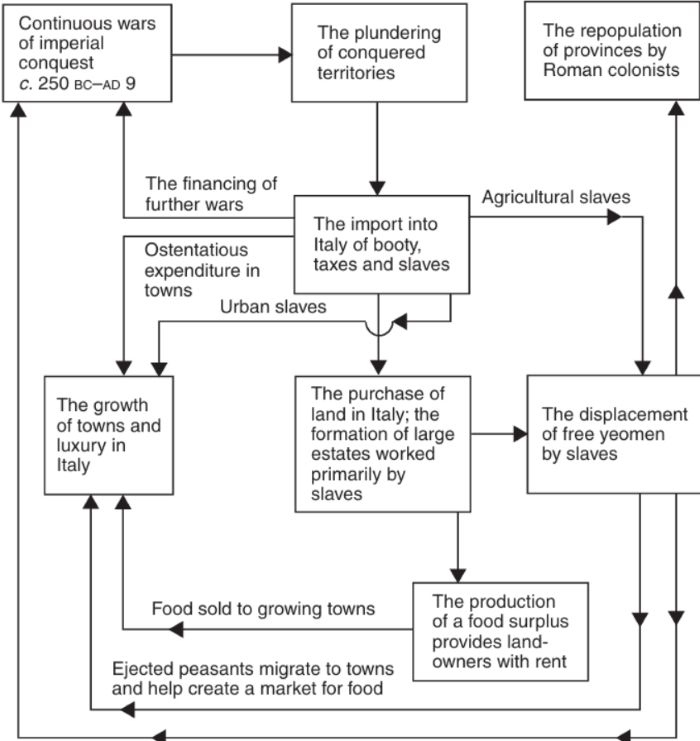
The tax collection system in ancient Rome evolved over the course of its Republic and Empire, adapting to the changing needs of a growing and increasingly complex state. Initially, the Roman system relied heavily on private contractors, known as the publicani, to manage tax collection, a system that was both efficient in some respects but also fraught with abuses. As Rome expanded and its empire grew larger, however, the administrative demands of tax collection became too great for private contractors alone to manage. Over time, the Roman state gradually took more control over the taxation system, leading to the development of a more structured and centralized bureaucracy under the emperors. This transformation mirrored the changing political landscape of Rome itself, as the Republic gave way to imperial rule, and the state’s ability to manage its finances became a critical component of its ability to maintain control over the vast territories it had acquired.
The publicani were private tax collectors, often wealthy Roman equites (knights), who were contracted by the state to manage taxes in provinces and oversee the collection of revenues. These contractors were hired to collect taxes in the form of direct assessments on property and land, as well as indirect taxes on goods and services, such as customs duties. The publicani were responsible for the collection of taxes on behalf of the Roman state, and in return, they were allowed to keep a portion of the tax revenue. The system relied on bidding for tax collection contracts, with the highest bidder winning the right to collect taxes in a particular region. While this system incentivized efficiency and made tax collection relatively swift, it also led to widespread corruption. The publicani often employed harsh and exploitative methods to extract as much revenue as possible, with little oversight or regulation from the state, leading to resentment among the provincials who were subjected to these high-handed practices.
The Roman system of taxation during the Republic was decentralized, with local elites in the provinces often overseeing the implementation of taxes on a more localized level. In these cases, local elites—typically landowners or wealthy individuals—acted as intermediaries between the Roman state and the provincial population. These local elites often held significant sway over the collection process, ensuring that taxes were paid, but also sometimes manipulating the system for their own benefit. This decentralized structure allowed for flexibility in how taxes were collected, but it also created a system rife with inequality and inefficiency. Furthermore, the lack of oversight in the system often meant that the Roman state had limited control over how taxes were actually levied and collected. The reliance on publicani and local elites often led to the exploitation of non-Roman populations in the provinces, who were subject to arbitrary tax rates and forced labor, with little recourse for protest or appeal.
With the transition from the Roman Republic to the Empire, the tax system underwent significant changes as the Roman state sought to address the problems of corruption, inefficiency, and inequality. The expansion of the empire necessitated a more systematic and centralized approach to tax collection, as the scale of revenue needed to support the military, administrative bureaucracy, and infrastructure projects grew exponentially. One of the key reforms in this process was the establishment of a more formalized state bureaucracy to handle tax collection, especially in the provinces. Augustus, the first emperor of Rome, reorganized the provinces and instituted new methods of taxation that sought to reduce the influence of publicani and empower the central government in the collection of revenues. Augustus established the census, a systematic inventory of property and population, which allowed the Roman state to better assess tax liabilities.
Under Augustus, the census became a central tool in the taxation system, enabling the government to assess both property taxes (the tributum capitis and tributum soli) and poll taxes, which were collected based on the number of citizens and the amount of land they owned. This system was designed to standardize tax assessments and reduce the exploitation that had been rampant under the publicani. While Augustus retained the publicani system for certain provinces, he also introduced the civitas tax system for provinces where Roman citizens resided. This reform allowed the state to exert greater control over tax collection while also introducing a more regulated, equitable system for taxation. The census served not only as a tool for taxation but also as a method for military recruitment, as it provided a detailed record of eligible male citizens who could be called up for military service. By bringing tax collection into a more centralized, state-run system, Augustus helped to stabilize the financial structure of the Roman Empire and reduce some of the abuses that had been common under the Republic.
Despite Augustus’ reforms, however, the Roman tax system remained complex and often relied on local elites and provincial intermediaries. While the emperor and his bureaucrats oversaw the central collection of taxes, the provincial governors continued to play an important role in the collection process. The central government relied on a network of provincial officials, such as prefects and legates, to ensure that tax collection was carried out according to imperial regulations. In practice, however, local elites and wealthy landowners still had a significant influence over how taxes were levied and collected, particularly in rural areas. This was especially true in the provinces that were farther from Rome, where the central bureaucracy had less direct control. Local elites often acted as tax farmers, collecting taxes on behalf of the emperor in exchange for a portion of the revenue, though they were now subject to more oversight and regulation than in the Republic.
The tax collection system of the Roman Empire continued to evolve as the empire expanded and faced new financial challenges. By the third century CE, the empire was increasingly relying on a more sophisticated and formalized bureaucracy to manage both civil and military matters, including tax collection. The growth of the imperial bureaucracy, particularly under emperors like Diocletian, reflected the increasing complexity of the Roman Empire’s administrative apparatus. Diocletian, in particular, reorganized the empire into smaller dioceses, each with its own regional administration, including officials responsible for overseeing taxes. The emperor’s officials, including praetorian prefects and provincial governors, became increasingly involved in managing revenue and ensuring that taxes were collected in an orderly manner. Diocletian’s tax reforms, particularly his implementation of fixed taxes based on land and income, aimed to create a more predictable and stable revenue system for the empire, though the burden of taxation often fell hardest on the lower classes.
One of the most significant aspects of Roman taxation was the relationship between military expenditure and tax revenue. The Roman military was the largest and most expensive aspect of the Roman state, and tax revenue was essential for maintaining the vast Roman legions. From the Republic onward, taxes were levied not only to fund the military but also to support other key aspects of Roman infrastructure, such as public works, grain distribution, and the upkeep of roads and cities. The reliance on taxes to fund military campaigns and garrisons led to significant pressure on the provincial populations, as they were required to bear the burden of the empire’s military commitments. Additionally, military settlements, such as colonies and fortifications, were often funded through local taxation, further entwining the Roman military with the taxation system.
As the empire entered its later stages, particularly during the Crisis of the Third Century, the fiscal challenges of maintaining a large and diverse empire became more apparent. Taxation became a contentious issue, and many provinces saw rebellions and revolts due to heavy tax burdens. Furthermore, inflation and economic instability compounded the difficulties of tax collection, as the empire faced declining agricultural production, the spread of disease, and increasing military demands. The imposition of taxes became a central issue in the debates surrounding imperial governance, with emperors like Aurelian and Diocletian attempting to address these issues through both military reforms and economic measures. While the Roman taxation system was initially designed to be flexible and responsive to the needs of the state, it increasingly became a source of frustration for both the elite and the common people.
The Roman tax system evolved significantly over time, shifting from a system based on private contractors and local elites to a more centralized bureaucratic structure. Initially, the publicani played a major role in collecting taxes, but as the empire grew and the state’s needs became more complex, reforms were introduced to centralize and regulate the process. Augustus’ reforms, including the census and the establishment of more standardized tax systems, marked the beginning of a more systematic approach to taxation. By the time of the later emperors, the taxation system had become more institutionalized, with a complex bureaucracy handling both tax collection and distribution of funds to military and civic needs. While Roman tax collection systems were innovative and efficient in many respects, they also contributed to the economic challenges faced by the empire, especially as the burdens of maintaining the empire’s vast territory became ever more difficult to bear.
Coinage and the Imperial Economy
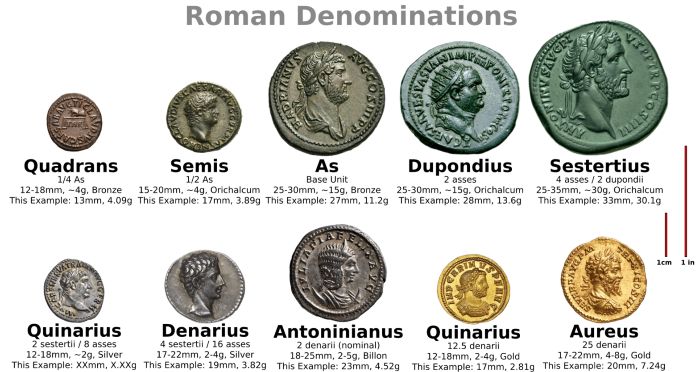
Ancient Roman coinage played a central role in the development of the imperial economy, functioning not only as a medium of exchange but also as a tool of political propaganda, social control, and imperial integration. The Roman economy, with its vast territorial expanse, relied heavily on the creation and circulation of coinage to facilitate trade, pay soldiers, and fund the complex administrative and military structure that defined the empire. The earliest Roman coins, which appeared in the 4th century BCE, were minted primarily in bronze and later in silver, reflecting both the needs of the Roman state and the growing sophistication of its economy. Over time, Roman coins, particularly gold, silver, and bronze denominations, became widely circulated across the Mediterranean, helping integrate the diverse regions under Roman control into a unified economic system. Coinage served as the backbone of Roman commerce, providing a standardized and efficient means of trade in an empire that spanned from Britain to Mesopotamia.
The early Roman coinage system was relatively simple, with the main denominations being the as, a bronze coin, and the denarius, a silver coin. The denarius became the dominant coin in the Roman economy during the Republic, reflecting the growing importance of trade and the expanding size of the Roman military. The value of the denarius was originally set at 10 asses, but over time, this changed as inflation and shifts in economic policy affected the weight and purity of the coins. The regular issue of coinage by the state enabled the Roman economy to function smoothly, facilitating everyday transactions and trade across vast distances. Roman coinage also enabled the state to pay its soldiers and other officials, and it served as an important means of securing loyalty and stability within the empire. However, the system was not without its challenges, as inflation, debasement of coinage, and fluctuations in supply and demand could disrupt the economy.
Under the Roman Empire, the role of coinage expanded even further, becoming a critical tool for the emperors in consolidating and projecting their authority. Emperors used coins as a means of disseminating their image, solidifying their legitimacy, and conveying political messages to the public. Imperial coinage was deliberately designed to reflect the power and achievements of the emperor, and coins were issued in the emperor’s name to celebrate military victories, imperial accomplishments, and key aspects of the emperor’s reign. This use of coinage as political propaganda was particularly evident during the reigns of emperors like Augustus, who sought to establish a strong imperial identity following the tumultuous years of the Republic. The image of the emperor on coins was a way of reinforcing the centralization of power and the emperor’s role as the protector of the Roman state. Additionally, coins were issued to commemorate public works, such as the construction of roads, temples, and arenas, which not only enhanced the emperor’s image but also reinforced the stability and prosperity of the empire.
The Roman imperial economy was largely centered around the extensive taxation system, and coinage was essential in facilitating the payment of taxes. The government relied on coinage for the payment of provincial taxes, soldier salaries, and the upkeep of infrastructure, including the maintenance of the Roman legions. With a vast network of trade routes and a highly organized economy, coins circulated widely in both urban and rural areas, helping to standardize and simplify transactions. While local economies often had their own systems of exchange, Roman coinage helped to integrate these regional economies into the broader imperial framework. Additionally, the minting of coins allowed the Roman state to regulate the supply of currency, ensuring that the economic system remained stable. However, as the empire expanded and military expenditures grew, emperors often resorted to debasing the coinage—reducing the weight and purity of coins in order to produce more money. This practice, though effective in the short term, led to inflation and reduced the trust in the value of the Roman currency, particularly during periods of crisis.
The economic challenges facing the Roman Empire during its later years were intricately linked to the stability of its coinage. As the empire grew larger and more complex, the need for more money to fund military campaigns, infrastructure, and government salaries increased. To meet these demands, emperors like Nero and Diocletian resorted to debasing the coinage, often reducing the amount of precious metal in the coins. This led to a decline in the value of money and, over time, contributed to economic instability. The constant debasement of the coinage eroded public confidence in the currency, leading to inflation and the rise of a barter economy in some regions. The financial strain caused by the overproduction of coins eventually contributed to the collapse of the Roman economic system in the West, as the empire could no longer sustain its military or administrative structure through coinage alone. The relationship between coinage and imperial economic health was thus a delicate balance, with the overreliance on the minting of coins to fund the state leading to long-term economic consequences.
Roman coinage was not only an essential tool for the daily functioning of the empire’s economy but also a significant vehicle for imperial propaganda and political control. From the early Republic to the height of the Empire, the Roman government used coinage to finance military endeavors, collect taxes, and project the emperor’s image across the vast territories of the empire. However, the history of Roman coinage also reflects the larger economic challenges faced by the empire. The debasement of the coinage, particularly in the later years of the Empire, led to inflation and contributed to the decline of the Roman economy. Despite these challenges, the legacy of Roman coinage remains a testament to the sophistication of Roman economic administration and the ways in which currency could be used to unify and control an empire.
Grain Supply and Welfare Programs
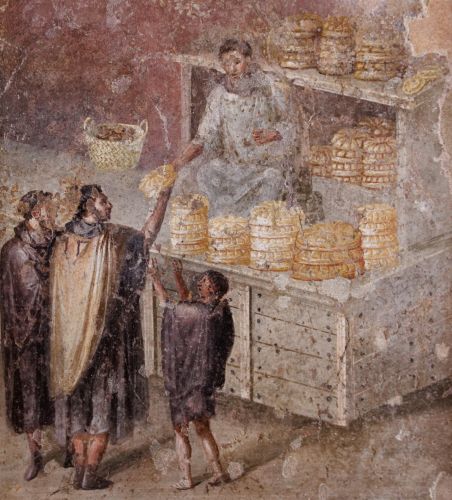
Grain supply and welfare programs were critical components of the Roman Empire’s economic and social structure, particularly in the urban centers where large populations relied on state-sponsored distributions of grain to survive. Rome, as the capital of a vast empire, faced significant challenges in providing food for its citizens, particularly the poor and those who did not have the means to purchase food on the open market. One of the key aspects of Roman statecraft was the provision of free or subsidized grain to the urban population, which played an essential role in maintaining social stability and political loyalty. The Roman state, particularly during the late Republic and Empire, recognized that ensuring a steady and affordable grain supply to its citizens was not only a practical necessity but also a tool of political control, as grain distributions were used by politicians to garner popular support.
The grain supply for Rome was primarily sourced from the provinces, with Egypt being the most important supplier of grain to the city. The province of Egypt, under Roman control since 30 BCE, became the empire’s granary, providing vast quantities of grain that were transported by sea to Rome. Other provinces, such as North Africa (modern-day Tunisia and Algeria), Sicily, and parts of Spain, also contributed to the empire’s grain supply, though Egypt’s position as the main provider was unmatched. The state controlled the importation and distribution of grain, ensuring that it could manage the fluctuating demands of the population. The central role of grain in sustaining the Roman populace meant that the government had to carefully regulate the supply chain to prevent shortages or price inflation, which could lead to unrest and political instability. Ensuring a constant and reliable grain supply was, therefore, a matter of both economic and political importance for Roman rulers.
To manage the distribution of grain, the Roman state established welfare programs that included regular distributions of free or subsidized grain to the urban poor, particularly in Rome. This system of grain dole, known as the cura annonae, was one of the most important forms of social welfare in ancient Rome. Initially, these grain distributions were reserved for Roman citizens who met specific criteria, such as poverty or participation in the military, and the program was meant to ensure that the most vulnerable members of society had access to basic foodstuffs. The welfare program grew significantly during the late Republic, especially under leaders such as Gaius Gracchus and later under the emperors, who expanded the distribution to more citizens. Augustus, for example, formalized and expanded the grain dole system as part of his broader efforts to pacify the urban populace and stabilize Roman society. By providing a steady supply of grain, emperors sought to prevent riots and political uprisings, such as those caused by food shortages in earlier periods of Roman history.
The grain dole became a powerful political tool, with emperors using it to secure loyalty from the people. The act of distributing free grain was not just an act of charity but also a means of cultivating popular support and ensuring political stability in Rome’s ever-growing and volatile urban population. Roman emperors, particularly during the early Imperial period, understood the value of maintaining the favor of the people, and the grain dole became an essential means of demonstrating the emperor’s benevolence. The welfare program was often expanded during times of crisis or economic difficulty, as emperors sought to shield the population from the harsh realities of inflation or grain shortages. Moreover, the distribution of grain helped create a sense of dependency on the state, as many poor Romans came to expect regular handouts. This system of patronage was key to the political relationship between the emperor and the people, with the grain dole serving as a tool of imperial propaganda that reinforced the emperor’s role as the protector of the people.
However, despite its importance, the grain dole system was not without its drawbacks and challenges. The sheer scale of the program required significant administrative oversight to ensure that the grain supply was steady and that the distribution was conducted fairly. Corruption and mismanagement were common, and emperors often had to address accusations of favoritism or inefficiency in the distribution of grain. In addition, the system was increasingly strained as Rome’s population grew, especially during the second century CE, when the city’s population reached over a million people. The reliance on the provinces, particularly Egypt, for grain imports meant that any disruption in the supply chain—whether due to military conflict, economic instability, or natural disasters—could lead to severe food shortages in the city. During such periods, the threat of famine, riots, and civil unrest became a constant concern for Roman authorities. The grain dole system, while crucial to maintaining order in the short term, could not always prevent the social tensions that arose when the economic and logistical challenges of grain supply became too great to manage.
Grain supply and welfare programs in ancient Rome were essential not only for the survival of the urban population but also for maintaining the political and social stability of the empire. The state’s control over the grain trade and the welfare system became one of the key ways in which emperors and political leaders could ensure loyalty and prevent unrest. By securing a steady grain supply, particularly through imports from provinces like Egypt, and by instituting the grain dole, the Roman government created a system of social welfare that supported the urban poor and reinforced the emperor’s authority. Yet, this system was not without its challenges, as corruption, logistical difficulties, and political manipulation of the dole highlighted the complexities of managing such a large-scale welfare program. Ultimately, the grain dole reflects both the achievements and limitations of the Roman state in balancing the needs of its citizens with the demands of imperial governance.
Urban Administration
Curatores and Aediles
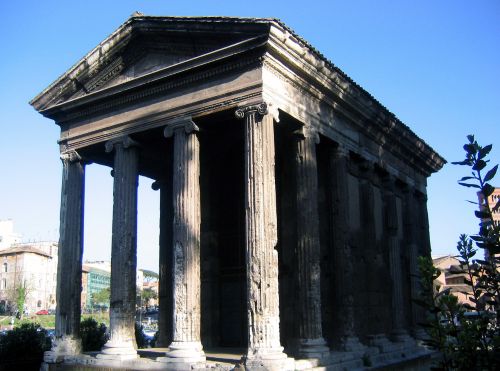
The roles of curatores and aediles in ancient Rome were integral to the functioning of the urban administration and the smooth operation of the city’s infrastructure. Both positions, though distinct in their responsibilities, were central to maintaining public order and ensuring the welfare of Roman citizens. The curatores were specialized officials, typically appointed by the state, who were tasked with overseeing specific public works, resources, or areas of governance. The term curator originally referred to a guardian or supervisor of a particular aspect of the Roman state or society. Over time, curatores became responsible for overseeing the maintenance and operation of vital public facilities, such as aqueducts, grain supply, or roadways, which were essential to the daily functioning of Rome and the broader empire. These officials were crucial for ensuring that the Roman infrastructure, which included a complex system of roads, bridges, and waterworks, was well-maintained and efficient, as neglect of such critical resources could lead to economic or social disruption.
The role of the aediles was similarly crucial to the administrative structure of Rome, particularly in the management of public services, markets, and the city’s entertainment. Originally, the aediles were responsible for the maintenance and regulation of public buildings, such as temples, and the upkeep of the streets, which included ensuring that the urban space was clean, functional, and safe for citizens. Over time, their duties expanded to include managing the grain supply to ensure that the population had enough food, as well as overseeing the organization of public games, festivals, and other forms of entertainment. The aediles were also responsible for the enforcement of public morals and laws, including regulating the behavior of market vendors and ensuring that public order was maintained during large gatherings. The aediles were often seen as a bridge between the Roman magistracy and the people, as they were directly involved in the day-to-day welfare of the Roman citizens, ensuring that the city’s infrastructure and public spaces were adequately cared for.
Both curatores and aediles were seen as magistrates with significant authority, although their roles were not necessarily tied to the military or political leadership that other Roman magistracies, such as consuls or praetors, held. The aediles, in particular, were elected officials and could rise in rank through the cursus honorum, the sequence of offices that allowed Roman men to move through the ranks of public service. They were often young politicians seeking to gain favor with the people, as the position of aedile offered an opportunity to showcase one’s leadership skills and build a political base. The role of aedile was thus an important stepping stone for many Roman politicians, as it provided an avenue for demonstrating competence in urban management and building a reputation for public service. The aediles were expected to organize public games and festivities, which often included grand displays such as gladiatorial contests or chariot races, thus gaining the favor of the populace through spectacular entertainment and the provision of food and entertainment to the people of Rome.
The curatores, on the other hand, were often appointed for specific administrative or technical duties rather than elected through popular vote. While the aediles were more concerned with the public face of Rome, maintaining order and providing for the social needs of the people, the curatores were responsible for managing essential public resources and infrastructure. They oversaw projects related to the city’s physical structure, such as the repair and management of aqueducts, roads, or the grain supply. Some curatores were appointed to manage the grain supply in particular, ensuring that the flow of grain to the city was consistent and stable, thus preventing famines or food shortages that could lead to social unrest. Their authority was more technical, focused on ensuring that the infrastructure and logistics of the city ran smoothly, though they were still accountable to the Senate or other high-ranking officials. As the empire expanded, the role of the curatores also extended to provinces, where they managed the construction and upkeep of Roman infrastructure in far-flung territories, linking the provinces to the imperial heartland.
While curatores and aediles were distinct in their areas of responsibility, their work often intersected. Both played critical roles in managing the public welfare, the infrastructure of the city, and the distribution of essential resources. The collaboration between these officials ensured that Rome remained a functioning, prosperous city, capable of supporting its massive population. The aediles brought the work of the curatores into the public sphere, particularly through their oversight of public events and the provision of food to the masses. Together, these officials helped to create a Roman urban environment that was not only functional but also a source of imperial pride. Their work demonstrated the Roman commitment to civic responsibility, from the organization of public entertainment to the meticulous management of resources and infrastructure, ensuring that the empire’s capital, and by extension the empire itself, remained stable and well-governed.
Water, Sanitation, and Roads
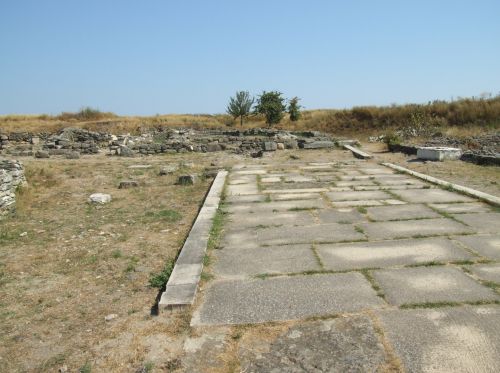
In ancient Rome, the management of water, sanitation, and roads was essential to the empire’s success and longevity. These aspects of Roman infrastructure were critical in supporting the daily lives of Roman citizens, maintaining the city’s cleanliness, ensuring the health of its population, and facilitating the smooth operation of both the urban and rural parts of the empire. The Romans were known for their advanced engineering and administrative ability, which allowed them to create a sophisticated infrastructure system that was unmatched in the ancient world. These developments were key factors that allowed the Roman Empire to thrive, as they enhanced public health, supported military logistics, and promoted economic stability.
One of the most impressive aspects of Roman engineering was their water management system. The Romans constructed a vast network of aqueducts, which brought fresh water from distant sources into the heart of their cities, including Rome itself. This system allowed for a constant supply of clean water for drinking, bathing, irrigation, and the operation of public fountains and baths. By the 1st century CE, Rome had eleven major aqueducts, which could transport water from as far as 60 miles away. The aqueducts were built with incredible precision, and many of them still stand today as a testament to Roman engineering skills. The water from these aqueducts supplied public baths, fountains, and homes of the wealthy, while also filling cisterns that provided a backup supply in case of drought or other disruptions. Aqueducts were not just a technological achievement, but also a political statement, demonstrating the power and ingenuity of the Roman state.
Water management was intrinsically linked to sanitation in Rome. The Romans understood the importance of proper waste disposal to maintain a healthy city and prevent the spread of disease. They constructed an extensive system of public latrines and sewers, with the most famous example being the Cloaca Maxima, one of the earliest and most significant drainage systems in the world. The Cloaca Maxima was initially built in the 6th century BCE and was later expanded during the Republic and Empire to handle the growing population of Rome. This system carried waste water and sewage away from the city’s public spaces and into the Tiber River, ensuring that waste did not accumulate and that sanitation standards were maintained. Roman public latrines were an essential part of daily life, and their design often included long rows of stone seats with channels for water to flow underneath, flushing away waste.
The Romans also developed an advanced system of public baths, which were not only places of hygiene but also social hubs. Bathhouses, or thermae, were found throughout the empire, and they featured sophisticated heating systems such as the hypocaust, an underfloor heating system that warmed the rooms with hot air. These bathhouses were open to the public and were often used by both the wealthy and the poor, providing a place to socialize, exercise, and relax. The complex water management involved in these bathhouses was extensive, with large reservoirs, channels, and plumbing systems that ensured a steady supply of hot and cold water. The existence of these baths reflected Roman values of cleanliness and the importance placed on public health. The Roman approach to bathing and sanitation was one of the most advanced in the ancient world, setting standards for future generations.
In addition to water management and sanitation, the Roman road network was another key aspect of their infrastructure that supported the empire’s success. Roman roads were not only vital for military logistics, allowing Roman legions to move quickly across vast distances, but also facilitated trade, communication, and the expansion of Roman culture. The construction of Roman roads began in the 4th century BCE, and by the time of the Empire, the Romans had constructed over 250,000 miles of roads, with over 50,000 miles being paved with stones. Roman roads were built with a layered structure, including a foundation of large stones, a layer of smaller stones or gravel, and a final surface of tightly fitted stone slabs. This design ensured the roads were durable, could withstand heavy traffic, and drained water efficiently. Roads were also equipped with mile markers, which helped travelers gauge distances and navigate the empire more easily.
Roman roads were a crucial element of the empire’s military prowess. The ability to move troops and supplies quickly across the empire was essential for maintaining Roman dominance. The construction of roads also helped consolidate Roman control over conquered territories by enabling rapid communication and the spread of Roman culture and governance. In addition to facilitating military movements, roads were essential for trade, as they allowed merchants and traders to transport goods throughout the empire. The extensive road network made it possible to maintain a steady flow of goods, such as grain, wine, and olive oil, between provinces and to the capital city of Rome. The smooth and efficient transportation of resources was vital to the functioning of the Roman economy.
The Roman military was intimately involved in the construction and maintenance of roads. Soldiers were often tasked with building and repairing roads as part of their duties, a process that not only facilitated military operations but also helped integrate new territories into the empire. Roman military engineers, or fabri, were responsible for planning and constructing roads, bridges, and fortifications. They used surveying tools, such as the groma and the chorobates, to ensure that the roads were straight and level, and they also built bridges over rivers and other obstacles. The quality of Roman roads was so high that many of them have survived to this day, and modern road-building techniques still draw upon Roman engineering principles. The Roman emphasis on infrastructure, including roads, water, and sanitation, contributed to the long-lasting stability and efficiency of the empire.
Roman roads also served a social function, as they provided a means for Roman culture to spread across the empire. As the roads connected cities and provinces, they facilitated the movement of ideas, language, and Roman customs, helping to unify the diverse regions under Roman rule. The extensive road network allowed for the dissemination of Roman law, religion, and cultural practices, contributing to the creation of a common Roman identity. The roads also supported the travel of scholars, philosophers, and religious leaders, who were able to share knowledge and influence communities throughout the empire. Roman roads were not just physical pathways; they were conduits for the flow of Roman influence and power, which helped maintain cohesion within the vast empire.
The development of sanitation systems in Roman cities was also deeply linked to their commitment to public health and urban planning. Large-scale construction projects, such as the Cloaca Maxima, were complemented by the construction of smaller public latrines and the regulation of private waste disposal. Roman urban planners paid careful attention to the placement of buildings and public spaces, ensuring that waste did not accumulate in congested areas and that public water systems were kept clean. The Romans’ understanding of sanitation was ahead of its time, with their sewage systems serving as models for later civilizations. The Cloaca Maxima itself continued to function for centuries after the fall of the Western Roman Empire, showing the lasting impact of Roman innovations in public health and infrastructure.
Water, sanitation, and roads were foundational to the functioning of the Roman Empire, and their development reflects the Romans’ advanced understanding of engineering, public health, and urban planning. The aqueducts and sewer systems allowed for the effective management of water and waste, creating a clean and efficient environment for Roman citizens. The road network was essential not only for military and economic reasons but also for the spread of Roman culture and governance. The Romans’ emphasis on infrastructure contributed to their empire’s success, and their engineering innovations continue to influence modern urban planning and civil engineering today.
Fire Brigades and Law Enforcement
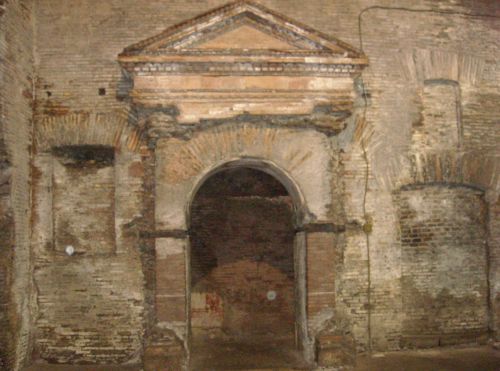
In ancient Rome, fire brigades and law enforcement were essential components of the urban infrastructure that helped maintain order and safety within the city. As Rome grew in size and complexity, the risks associated with fire and crime also increased, necessitating the development of organized systems for managing these threats. Given the densely populated and highly urbanized nature of Rome, fire hazards were a constant concern. Most buildings were constructed from wood, making them particularly vulnerable to fires, and the narrow, crowded streets further exacerbated the problem. Consequently, the Roman state recognized the importance of having a dedicated force to address both fire outbreaks and criminal activity, leading to the creation of organized fire brigades and law enforcement agencies.
The Roman fire brigade, known as the Cohortes Vigilum, was one of the first large-scale public safety forces in history. Established during the reign of Augustus in 6 CE, the Vigiles were responsible for firefighting, as well as patrolling the streets to prevent crime and maintain order. The Vigiles were organized into cohorts, and their primary duty was to extinguish fires, which they did with water and various types of fire-fighting equipment, including buckets, pumps, and hand-held hoses. In addition to dealing with fires, the Vigiles also acted as night watchmen, guarding the city against theft and maintaining public order during the nighttime hours. The fire brigade’s role was thus not just limited to firefighting, but also extended to law enforcement and the maintenance of peace within the urban environment. They were an integral part of the larger system of public safety in the Roman Empire, ensuring that the growing city of Rome could function with relative security.
The Vigiles were distinct from other law enforcement agencies in Rome, such as the Cohortes Urbanae, a paramilitary unit tasked with maintaining public order during the daytime. The Cohortes Urbanae were responsible for policing the streets, dealing with public disturbances, and overseeing the enforcement of laws, particularly those related to public morals, such as regulations on gambling, prostitution, and religious practices. The Vigiles, by contrast, focused primarily on fire prevention and response, but their dual role as both firefighters and night patrols meant that they often found themselves dealing with a range of other public safety concerns as well. For example, they were tasked with ensuring that individuals did not engage in illegal activities under the cover of darkness, patrolling the city’s streets to deter criminals and sometimes intervening in disputes. This overlap in duties made the Vigiles not just a specialized firefighting force but also an important component of law enforcement within the city.
In addition to the Vigiles and the Cohortes Urbanae, the Roman legal system included a variety of other officers and institutions dedicated to enforcing laws and maintaining order. The praefectus urbi, for instance, was an official appointed to oversee the general administration of the city, including the enforcement of public safety measures. The praefectus urbi had the authority to appoint subordinate officers, such as the curatores, who were responsible for overseeing specific areas of Roman life, including grain supply, infrastructure, and public buildings. These officers played a role in regulating urban life and ensuring that the city ran smoothly. The praefectus urbi and other magistrates worked in tandem with the Vigiles and the Cohortes Urbanae to ensure that laws were upheld and public safety was maintained, particularly in the bustling, complex environment of Rome.
One of the key aspects of Roman law enforcement was the legal structure that governed public safety and the mechanisms by which crimes were investigated and prosecuted. Roman law established a system of delicta, or criminal offenses, which ranged from theft and assault to more serious offenses such as arson and murder. In cases of arson, the Vigiles were the first responders, and their role in combating fires was supported by a legal framework that sought to punish those found guilty of starting fires intentionally. Arson was considered a grave crime, given the dangers it posed to public safety and the Roman way of life, and offenders were often subjected to harsh penalties, including exile or even execution. The Roman legal system, with its various police and firefighting forces, created a sense of security that allowed the city to function as a thriving political and economic center, with the Vigiles and law enforcement agencies working together to ensure the safety of the populace.
Fire brigades and law enforcement played a vital role in maintaining the safety and security of ancient Rome, one of the largest and most populous cities in the ancient world. The Cohortes Vigilum, or Vigiles, were instrumental in managing fire risks, responding to fires, and patrolling the streets to prevent crime, while other agencies such as the Cohortes Urbanae and the praefectus urbi helped enforce laws and maintain order. The development of these systems of public safety and law enforcement reflected Rome’s commitment to protecting its citizens and preserving social stability in the face of significant urban challenges. Fire safety and crime prevention were essential to the prosperity of the city, and the Roman authorities responded to these needs with a sophisticated and multifaceted approach, which laid the groundwork for modern policing and firefighting systems.
Religious Administration and Control
Priestly Colleges and State Religion
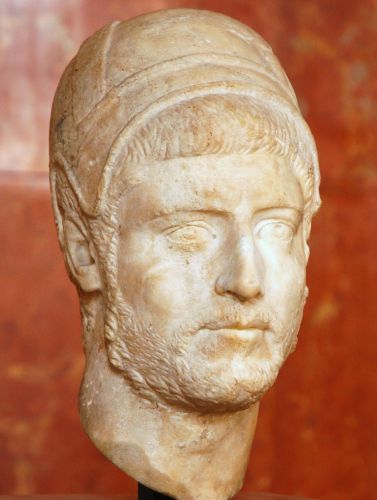
In ancient Rome, the state religion was deeply intertwined with the political and social fabric of the empire, with the functioning of religious rituals, ceremonies, and duties controlled and coordinated by various priestly colleges. These colleges were groups of priests who oversaw specific religious functions and had significant political, social, and administrative power. The Roman priesthood was complex, with numerous different offices and responsibilities that reflected the religious and political structures of the state. Religion in ancient Rome was not seen as a private matter but as a public duty to maintain favor with the gods and ensure the prosperity of the state. The priestly colleges were tasked with performing rituals that were believed to ensure the stability of the Roman state, and these religious functions were often closely linked to the authority of the Roman political elite.
One of the most important priestly colleges in ancient Rome was the Pontifical College, or the Collegium Pontificum. This college was headed by the Pontifex Maximus, the highest religious authority in Rome, a position that was so powerful it was often held by the emperor himself. The Pontifices were responsible for overseeing the religious calendar, ensuring that proper ceremonies were performed at the right times, and managing the sacred rites that were central to Roman religious life. They had control over the sacred books, maintained the records of religious ceremonies, and acted as advisors to the state on matters relating to divine approval. The Pontifices also played a key role in determining the validity of auspices and omens, which were critical to political and military decision-making in ancient Rome. The Pontifex Maximus not only oversaw the Pontifices but also had a role in guiding the moral and religious behavior of the Roman people, thus consolidating religious and political power in the figure of one individual.
Another influential priestly college was the College of Augurs (Collegium Augurum), whose members were responsible for interpreting the will of the gods through the observation of auspices, or signs from the natural world, such as the flight patterns of birds or the behavior of animals. The Augurs played an essential role in Roman politics, as their interpretations of these omens were consulted before important public decisions, including military campaigns, the selection of magistrates, and the declaration of war. The belief in divine guidance was so pervasive in Roman society that auspices could influence even the most mundane political or social actions. The Augurs were a powerful group because their interpretations could legitimize or delegitimize political actions and outcomes, and their advice was sought by the Senate, the consuls, and other magistrates to ensure that the Roman state’s decisions aligned with divine favor.
The College of Vestals, or Vestal Virgins, was another key religious institution in ancient Rome, though its function was somewhat different from the other priestly colleges. The Vestal Virgins were responsible for maintaining the sacred fire of Vesta, the goddess of the hearth and home, which symbolized the well-being and stability of Rome. The fire in the Vesta temple was considered essential to the health of the city, and it was believed that if the fire went out, Rome’s fortunes would decline. The Vestal Virgins were chosen from young girls of noble families and took a vow of chastity, as their purity was seen as necessary for the proper maintenance of the sacred fire and their connection to the goddess. The Vestal Virgins also played an important role in performing other religious ceremonies, such as the celebration of the Vestal Games and sacrifices to ensure the prosperity of Rome. The Vestal Virgins were held in high regard, enjoying privileges such as the ability to own property and to be given seats of honor at public events, yet they were also bound by strict duties and obligations that kept them within the religious and social framework of the state.
The College of Haruspices (Collegium Haruspicum) was another significant religious institution that was responsible for divining the will of the gods through the practice of haruspicy, which involved examining the entrails of sacrificed animals, particularly their livers, to interpret omens. Haruspices were skilled in reading these signs to predict the future or offer guidance on decisions, especially in military and state affairs. While the Augurs interpreted the flight patterns of birds, the Haruspices read the entrails of animals, thus performing another form of divine interpretation that was integral to the Roman understanding of fate and divine intervention. This college also had strong connections with the Roman state, as its members were often consulted by officials before important political or military actions. Like the Augurs, the Haruspices served as intermediaries between the human and divine realms, ensuring that the Roman leaders acted in accordance with the gods’ wishes.
The role of these priestly colleges in the Roman state religion was not only religious but also deeply political. The members of these colleges were often drawn from the Roman elite and held prestigious positions within Roman society. By controlling religious rituals, ceremonies, and omens, these priests had considerable influence over political events. The state religion was an integral part of Rome’s identity, and by linking political power with religious authority, the Roman elite maintained their control over both the spiritual and temporal realms. The priesthoods provided an avenue for political leaders to demonstrate their piety and commitment to the Roman gods, further cementing their power and legitimacy. The intertwining of religious and political authority in these priestly colleges allowed the Roman state to function as a unified entity, with religious rites reinforcing the political decisions made by the ruling class.
The priestly colleges in ancient Rome were crucial to the maintenance of both the state religion and the functioning of Roman political life. Their roles in interpreting omens, conducting religious ceremonies, and maintaining sacred traditions were central to the identity of Rome, and their influence extended into the political, military, and social spheres. The intertwining of religious and political power in these priestly colleges ensured that the favor of the gods was always sought and maintained, reinforcing the legitimacy of Roman rule. Through their rituals and practices, the Roman priesthoods helped to shape the culture and identity of the empire, ensuring that the state remained in harmony with divine forces and that the political leaders could claim divine approval for their actions.
Emperor as Pontifex Maximus
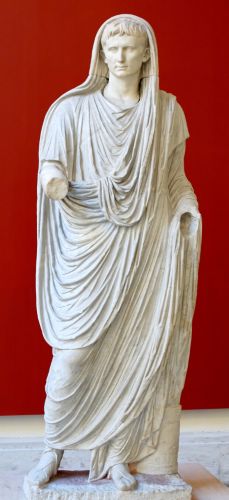
The role of the Roman emperor as Pontifex Maximus was one of immense religious and political significance. The title itself, which means “chief priest,” placed the emperor at the apex of both the Roman religious hierarchy and its political structure. While the position of Pontifex Maximus had originally been an office held by the elected magistrates of the Roman Republic, it became closely associated with the imperial office after Augustus, the first Roman emperor, took control. Augustus assumed the role of Pontifex Maximus in 12 BCE, cementing the emperor’s central role in the religious life of the state. By merging religious and political authority in his person, Augustus set a precedent that continued through the centuries of the empire. The Pontifex Maximus was responsible for overseeing the Roman state religion, ensuring that the proper rituals were observed, and making key decisions regarding religious policies. The emperor’s position as chief priest was a reflection of his role as the protector of the Roman state, and it was considered essential to maintaining the favor of the gods.
As Pontifex Maximus, the emperor had control over the vast network of priests, priestesses, and religious functions that governed the Roman state religion. The Pontifices, the religious college responsible for overseeing the official cults of Rome, reported to the Pontifex Maximus. This office had significant authority over the Roman calendar, the religious rites performed throughout the year, and the auspices that could guide decisions made by the government and military. The emperor, in his capacity as Pontifex Maximus, could influence the conduct of these rituals, ensuring that they aligned with his own political agenda or the needs of the state. The emperor’s religious authority extended to controlling the sacred rites that were believed to guarantee Rome’s stability, such as sacrifices, prayers, and the management of religious symbols. By occupying this religious role, the emperor could present himself as the intermediary between the Roman people and the gods, which was key to bolstering his legitimacy as ruler.
The emperor’s role as Pontifex Maximus also allowed him to maintain direct influence over the cults of imperial deification, a practice that became increasingly important in the imperial period. As the emperor’s reign progressed, the concept of divine favor and imperial cult grew more intertwined, and emperors were often deified after their deaths. The office of Pontifex Maximus gave the emperor the authority to oversee the ritual processes of deification, turning deceased emperors into gods and integrating them into the Roman pantheon. This was not only a religious function but also a political strategy, as the deification of emperors helped to solidify the continuity of imperial power and reinforced the idea of the emperor as divinely chosen. The emperor’s role as Pontifex Maximus was thus a tool to elevate the emperor’s status and secure the loyalty of the people by presenting the ruler as both a political and divine figure.
In the Roman religious system, rituals and public ceremonies played a crucial role in maintaining social cohesion and order. The emperor, as Pontifex Maximus, was directly responsible for ensuring that these religious ceremonies were carried out properly. This included overseeing the important rites performed by various priestly colleges, such as the Vestal Virgins, the Augurs, and the Haruspices. The emperor’s leadership in these ceremonies was seen as a demonstration of his divine favor and his role in safeguarding Rome’s prosperity and security. During times of crisis or military conflict, the emperor would sometimes lead public rituals or make sacrifices to ensure that Rome’s fortunes would turn in its favor. In this way, the emperor’s religious duties were not only ceremonial but also closely connected to the success of the state, particularly in times of war or political instability. The emperor, as Pontifex Maximus, was seen as having the ultimate responsibility for maintaining the religious rituals that protected Rome’s divine favor.
The emperor’s position as Pontifex Maximus was a key element in the broader relationship between religion and politics in Rome. The office allowed the emperor to intertwine religious observance with his political authority, thus enhancing his control over both the state and its people. Roman religion was deeply public, and by holding the title of Pontifex Maximus, the emperor became the focal point of religious devotion and, by extension, the loyalty of the Roman populace. The emperor’s role in religious matters could thus shape public perceptions of his power, his legitimacy, and his ability to protect the interests of the Roman people. The title of Pontifex Maximus emphasized the emperor’s dual role as both a secular ruler and a divine representative, which served to elevate the emperor above mere mortals and align his authority with that of the gods. This melding of religious and political authority was central to the emperor’s image and to the success of the imperial system, as it demonstrated the emperor’s ability to connect the earthly realm with the divine, ensuring the continuity and stability of the Roman Empire.
Emperor Worship and Provincial Cults
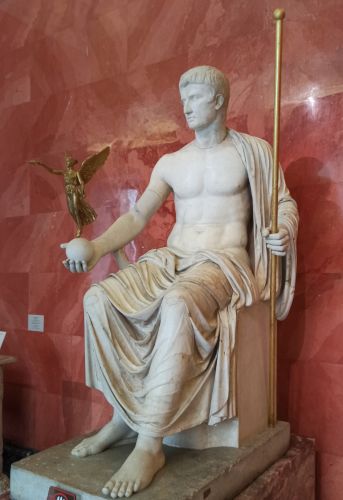
Emperor worship in ancient Rome, particularly the cult of the emperor, played a pivotal role in the structure and ideology of the Roman Empire. This practice evolved from a personal form of veneration to an institution that served both religious and political functions. The cult of the emperor had its roots in the Roman tradition of deifying exceptional individuals, particularly military leaders and prominent figures, after their death. However, the formalization of emperor worship began under Augustus, the first Roman emperor, who cleverly associated his authority with divine favor and celestial legitimacy. Augustus did not openly present himself as a god during his lifetime, but he cultivated a strong association with divine approval, positioning himself as the son of a god by linking his reign with the deification of his adoptive father, Julius Caesar. Over time, the practice of emperor worship expanded, and emperors began to receive divine honors during their lifetimes, solidifying their status as semi-divine or divine figures.
Emperor worship served as a powerful tool for uniting the diverse regions of the Roman Empire. Given the vast territorial expanse of Rome, from Hispania in the west to Syria in the east, it was essential for the emperor to have a unifying symbol that could transcend cultural and ethnic divisions. The imperial cult provided such a symbol, creating a shared religious practice that reinforced the emperor’s authority across different provinces. In many provinces, especially in the eastern Mediterranean, the practice of emperor worship had strong local traditions of deifying rulers or gods that were adapted into Roman imperial religious practices. The emperors were revered as gods, and their divine status was meant to affirm the stability and prosperity of the empire. In return, the emperor offered protection and the blessings of the Roman state to the local populations. By honoring the emperor, subjects were effectively participating in a form of civic religion that underscored their allegiance to the empire and its ruler.
The veneration of emperors was particularly strong in the provinces, where local communities could express their loyalty and devotion to Rome through the establishment of cults dedicated to the emperor. These provincial cults often involved the construction of temples dedicated to the imperial family, with the emperor and his family being depicted as divine figures or intermediaries between the gods and the people. These temples, which were sometimes adorned with grand statues of the emperor, became focal points for communal religious activities. The provincial priesthoods overseeing these temples were often composed of local elites, who used their positions as a way to gain favor with the central government. The imperial cult, thus, was not only a religious phenomenon but also a tool for reinforcing the social and political structures of the empire, integrating local elites into the broader Roman imperial system and ensuring their cooperation with the central authorities.
In some regions of the empire, particularly in the east, the cult of the emperor was adapted to fit within the context of local religious traditions. For instance, in Egypt, the emperor was often equated with the divine kingship of the pharaohs, and temples to the emperor were constructed alongside those dedicated to Egyptian gods. Similarly, in Asia Minor, emperors were venerated as the living gods who protected the provinces, and their images were prominently featured in local temples. In these areas, the imperial cult could be blended with indigenous religious practices, creating a syncretic form of worship that served both to honor the emperor and maintain local religious customs. This flexibility was a significant factor in the spread of emperor worship, as it allowed the Roman state to accommodate the diverse beliefs of its subjects while simultaneously asserting the centrality of imperial power.
The establishment of emperor worship in the provinces was formalized by the creation of imperial cults or provincial cults, which were typically governed by local priesthoods and associated with the Roman provincial administration. A notable institution was the Conventus Juridicus, a regional gathering of Roman magistrates, priests, and local elites who managed religious and political affairs, including the veneration of the emperor. These cults were designed to reinforce the loyalty of provincial elites and promote Romanization by blending Roman political ideology with local religious practices. The organization of the emperor’s worship was often hierarchical, with provincial capitals serving as centers for the imperial cult, and smaller towns and villages participating through local rituals and feasts. The high priest of the provincial cult, often appointed by Rome, would have a direct connection with the emperor, reinforcing the bond between the imperial center and the distant provinces.
The imperial cult was not just a vehicle for religious devotion; it was a political tool that served to legitimize the emperor’s rule. Emperors could use their religious status to bolster their authority, demonstrating that their reign was sanctioned by the gods and that their rule brought divine favor to the empire. The emperor’s participation in religious rituals, such as sacrifices or the declaration of public games, reinforced his status as the guardian of Roman religion and the protector of Rome’s destiny. The emperor, as both the head of state and the chief priest, was seen as the embodiment of Rome’s religious and political ideals, and his divine status served as a source of stability for the empire. The emperor’s power was legitimized not only by military force or political maneuvering but also by the belief that his actions were guided by divine will.
In addition to the veneration of the emperor during his lifetime, the process of posthumous deification was also a significant aspect of emperor worship. Upon the death of an emperor, the Senate had the power to declare the deceased ruler a god, and rituals were conducted to commemorate his deification. Temples and statues were erected in his honor, and annual festivals were held to celebrate his divine status. These posthumous cults were especially important in maintaining the continuity of imperial power, as they ensured that the emperor’s legacy lived on and continued to be venerated long after his death. Emperors such as Augustus, Claudius, and Hadrian were deified after their passing, and their cults became integral to the Roman religious landscape. The deification of emperors also served as a powerful message to the people of the empire that the emperor’s rule was eternal, reinforcing the notion that Rome’s greatness was divinely ordained.
Despite its widespread appeal and integration into Roman culture, the imperial cult was not universally embraced. In certain regions, especially in the western provinces, the veneration of the emperor was met with resistance, particularly among groups with strong religious traditions that conflicted with Roman imperialism. The most notable opposition came from the Jews and early Christians, both of whom rejected emperor worship on the grounds that it violated their monotheistic beliefs. For Jews, the idea of venerating a human ruler as divine was deeply offensive, and the Roman attempts to impose the imperial cult on Jewish communities led to tensions and rebellions, most famously the Jewish Revolts in the 1st and 2nd centuries CE. Early Christians, likewise, viewed the worship of the emperor as idolatry and a direct affront to the worship of their singular God. The refusal to honor the emperor as a divine figure became a key marker of Christian identity, leading to persecution by Roman authorities.
Emperor worship and provincial cults played a critical role in the expansion and consolidation of Roman power, fostering unity and loyalty across the vast territories of the empire. These religious practices reinforced the emperor’s divine legitimacy and created a sense of shared identity among the diverse populations of the empire. By associating the emperor with the divine, Rome ensured that the emperor’s power was seen as both sacred and unassailable, creating a bond between the ruler and his subjects that transcended mere political rule. While the imperial cult was not without its detractors, its widespread adoption across the empire helped to cement Rome’s dominance, both as a political entity and as a cultural force. Through emperor worship, Rome was able to craft a powerful image of eternal empire, supported by the favor of the gods, and embedded in the religious practices of its far-flung provinces.
Imperial Bureaucracy and Reforms
The Administrative Overhaul by Augustus
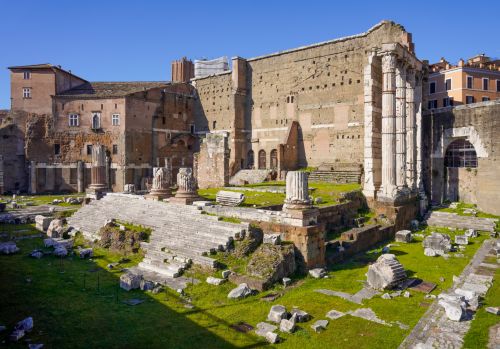
Augustus, the first emperor of Rome, is often credited with transforming the Roman political and administrative landscape. His reign marked the beginning of the Roman Empire, a new phase of government that replaced the Roman Republic, which had been beset by internal strife and political instability. Augustus’ administrative overhaul was not only a consolidation of power but also a systematic reorganization designed to ensure long-term stability and secure Roman governance in an ever-expanding empire. Augustus understood that for Rome to thrive under his rule, he needed to establish a firm and enduring system that could manage the complexities of a vast empire while maintaining the appearance of republican institutions. His reforms were broad-ranging, affecting everything from the military and the economy to local governance and religious practices.
One of Augustus’ most important reforms was the restructuring of the Roman army. The military had long been a powerful institution in Rome, but by Augustus’ time, it had become too decentralized and unstable. Augustus, through his legionary reforms, created a professional standing army that was loyal to the emperor rather than to individual generals or political factions. The army was organized into legions, each consisting of around 5,000 men, and Augustus established a permanent military force that could be stationed throughout the empire. This not only increased the effectiveness of the Roman military but also allowed Augustus to exert tighter control over the empire’s far-flung territories. Furthermore, Augustus implemented a system of military pensions for veterans, ensuring the loyalty of the soldiers and giving them an incentive to remain dedicated to the emperor. This move also helped to secure Augustus’ political power, as the military became a crucial pillar of his regime.
Augustus also undertook a significant reform of the provincial administration. Under the Roman Republic, provinces were often governed by officials who were appointed for a limited term, and the management of provinces could vary significantly depending on the competence and integrity of the governor. Augustus sought to eliminate this inconsistency by dividing the provinces into two categories: imperial provinces and senatorial provinces. The imperial provinces, which were under the direct control of the emperor, were generally those that posed the most military risk or had large military garrisons. The senatorial provinces, on the other hand, were governed by senators and were considered more stable. This system allowed Augustus to maintain a tight grip on the most volatile regions, such as the frontier provinces, while giving the Senate a greater role in the management of peaceful territories. By doing this, Augustus ensured that the governance of Rome’s provinces was streamlined, consistent, and more directly under his control, even though he maintained the appearance of a republic.
Another significant reform under Augustus was the expansion and improvement of Rome’s infrastructure. Augustus recognized that the physical development of the empire’s cities was vital to its functioning and prosperity. One of his major initiatives was the construction and maintenance of roads and public buildings, which connected the empire and facilitated trade, communication, and the movement of troops. Augustus also focused on the improvement of urban Rome itself, commissioning the construction of monumental buildings such as the Forum of Augustus and the Ara Pacis, which symbolized both the emperor’s power and Rome’s imperial identity. Augustus famously claimed that he “found Rome a city of brick and left it a city of marble,” highlighting his commitment to the aesthetic and functional development of the capital. This emphasis on infrastructure not only served practical purposes but also reinforced Augustus’ image as a benefactor of the Roman people, linking him to the prosperity and grandeur of the empire.
In addition to his infrastructural and military reforms, Augustus made significant changes to the Roman legal system. One of his key innovations was the implementation of a series of laws that aimed to promote traditional Roman values, especially those related to family and morality. Augustus sought to restore the moral fabric of Roman society, which he believed had been eroded by the excesses of the late Republic. Among these laws were the Lex Julia de Maritandis Ordinibus and the Lex Papia Poppaea, which incentivized marriage and childbearing among the Roman elite, while penalizing adultery and childlessness. These laws also placed a heavy emphasis on the role of women in society, encouraging them to marry and bear children in order to contribute to the population growth of the empire. Augustus’ moral legislation, though controversial, reflected his belief that a stable society could only exist if the traditional values of Roman citizenship and family life were upheld.
Augustus also reformed Rome’s taxation system, another key aspect of his administrative overhaul. The Roman taxation system had been largely dependent on local governors and varied from province to province, often resulting in inefficiency and corruption. Augustus sought to streamline the tax system by introducing a more centralized and standardized approach. He created a system of direct taxation on individuals, such as the tributum capitis (a head tax), which was levied on the Roman citizens. He also reformed the tax collection process, replacing the publicani, or private contractors, who had previously been responsible for collecting taxes, with a more professional and bureaucratic system. Augustus established the cursus publicus, a state-run postal system, to improve the efficiency of communication and logistics within the empire, and he expanded the state’s ability to collect revenues from imperial estates and newly conquered lands. These reforms helped to stabilize the empire’s economy and ensured that the state had the resources needed to fund military operations, public infrastructure, and administrative functions.
A critical aspect of Augustus’ administrative overhaul was his management of the Roman Senate. Although Augustus held the ultimate authority as emperor, he was careful to preserve the appearance of republican institutions and the Senate’s role in Roman governance. Augustus retained many of the Senate’s traditional functions, such as its role in lawmaking and financial oversight, but he skillfully diminished its power by gradually shifting the Senate’s duties to imperial control. He also took steps to ensure that the Senate was composed of loyal individuals, often appointing senators based on their loyalty to the emperor and their ability to carry out his wishes. Augustus also used his control over the Senate to enhance his own image, utilizing it to promote his policies and pass legislation that reflected his vision for the empire. By managing the Senate in this way, Augustus ensured that the Senate remained an instrument of imperial power rather than an independent political force.
In his administrative reforms, Augustus paid significant attention to the organization and functioning of Rome’s police and fire-fighting forces. Recognizing the challenges of managing a growing urban population, Augustus created a more structured system for maintaining public order. He established the Cohortes Urbanae, a special police force responsible for maintaining law and order within the city of Rome. Augustus also reorganized the city’s fire-fighting services, creating the Aquae et Excubiae, a group tasked with responding to fires. These reforms were part of Augustus’ broader efforts to improve the quality of life in Rome, ensuring that the city was not only safe and orderly but also able to accommodate its growing population. The Cohortes Urbanae and the fire-fighting service became essential parts of the emperor’s network of control, ensuring that public disturbances and emergencies were swiftly addressed.
Augustus also restructured the Roman religious system to reflect his authority and enhance his image as both a political and divine figure. He was keen to associate his reign with the will of the gods and to promote a sense of religious unity within the empire. Augustus restored many traditional Roman temples and religious practices, but he also linked his rule to the religious institutions of Rome, emphasizing his role as the Pontifex Maximus (the chief priest). He established a formal connection between the imperial cult and Roman religion, asserting that the emperor’s power was divinely ordained. Augustus promoted the worship of his own image and that of his family, initiating a cult that would become a powerful tool for cementing the loyalty of the Roman people and reinforcing the emperor’s divine status. This integration of religion with politics helped Augustus create a lasting and stable empire by linking his political authority with the perceived favor of the gods.
Augustus’ administrative overhaul extended to the management of Roman society itself. Through a series of laws, reforms, and public works, Augustus sought to instill a sense of Roman identity and pride in the citizens of Rome and the provinces. His regime promoted ideals of duty, honor, and civic responsibility, reflected in the moral legislation aimed at promoting family values and public decency. Augustus also used his reforms to control the distribution of land and wealth, ensuring that the elite were aligned with the imperial agenda. This allowed him to maintain stability in both the political and social realms, securing the loyalty of the elite while maintaining control over the broader populace. Augustus’ administrative reforms laid the foundation for the Roman Empire, and his careful balancing of republican forms with imperial power ensured the longevity of the system he established, securing Rome’s place as one of history’s most enduring empires.
Equites and Civil Service
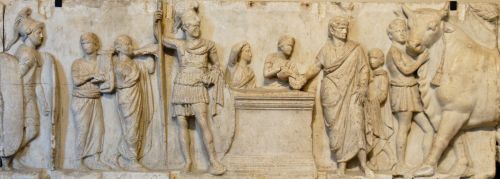
The equites (or equestrian order) in ancient Rome were a social class that played a crucial role in the administration of the Roman state, particularly as the empire evolved from the Roman Republic into the Empire. Originally, the equites were members of the cavalry, and their social status was linked to their ability to afford a horse for military service. However, by the late Republic and into the Imperial period, the role of the equites had shifted. With the expansion of the empire and the increasing complexity of governance, the equites became an important class in civil administration, particularly in the growing bureaucracy of the Roman state. As a class, the equites were often wealthy landowners, but they did not possess the same level of political power as the senators, whose influence stemmed from their connection to the aristocratic patrician class. Over time, however, the equites came to be closely associated with the Roman civil service, and their members were instrumental in the operation of imperial administration, finance, and military logistics.
Under Augustus, the equites became more formally integrated into the workings of the imperial bureaucracy. The emperor needed a class of men who were both loyal and competent to manage the expanding empire’s vast administrative tasks. Unlike the senators, who were often focused on the political life of Rome, the equites were well-suited for the practical, day-to-day running of the empire’s provincial and imperial affairs. They filled key roles in tax collection, finance, and military supply, often holding positions that were crucial to the functioning of the imperial system. Augustus recognized the importance of this class and began to appoint equites to a variety of positions within the civil service. One of the most important aspects of the equites’ role in the civil service was their management of the empire’s finances. They oversaw the collection of taxes in the provinces, and many served as officers in the cursus publicus, the state-run postal and transportation service, which was essential to the communication and logistics of the empire. These responsibilities were central to ensuring that the Roman state operated efficiently, and the equites were often the backbone of this process.
In addition to their involvement in finance and logistics, the equites also played a significant role in the military administration of the empire. The equites were frequently appointed to oversee military supply chains, which were crucial for maintaining the Roman army’s effectiveness. Since the Roman Empire was constantly engaged in military campaigns, whether along its borders or in the provinces, ensuring the efficient movement of supplies was a critical task. The equites acted as logisticians, managing the storage and distribution of food, weapons, and other necessities for the military. This responsibility tied the equites closely to the military elite and made them integral to the Roman war machine. As a result, the equites developed a close relationship with the military, and many members of the class were promoted to military command positions, sometimes even rising to the level of general or procurator, positions that were typically held by more aristocratic individuals. This dual connection to both civil administration and military operations made the equites an essential part of the Roman imperial structure.
The equites were also significant in the development of the Roman legal and judicial systems. As the Roman Empire expanded, the legal complexities of managing such a vast territory required a large and organized bureaucracy. Many equites served as judges or in administrative positions that involved the enforcement of laws and the regulation of trade, commerce, and local governance in the provinces. This role in the legal system further solidified the importance of the equites in the Roman civil service. They were responsible for overseeing local disputes, ensuring the implementation of Roman law, and maintaining order in the provinces. The equites were often called upon to serve as officials in the provincial courts, where they could exercise their authority in legal matters. Their involvement in both the civil and military aspects of Roman administration gave them significant power, and their duties were often intertwined with the political realities of the empire. As Rome’s legal system evolved, so too did the role of the equites in shaping the empire’s ability to enforce its laws across its diverse territories.
By the time of the later Empire, the equites had become firmly entrenched in the imperial administration, filling positions that were vital to the functioning of the empire. The equites were no longer limited to managing finances and military logistics; they increasingly took on roles that involved the regulation of public works, overseeing the distribution of grain and other resources, and managing the empire’s vast infrastructure projects. As the empire became more bureaucratic, the equites provided the skilled administrators necessary for the smooth functioning of the Roman state. The class continued to hold a special relationship with the emperor, who relied on the loyalty and competence of the equites to ensure the stability of the empire. They were also important figures in local governance, often being appointed as officials in provincial cities or regions, where they served as intermediaries between the emperor and the local populations. While the equites never achieved the political power of the Senate, their role in the administration of the empire ensured that they remained one of the most influential classes in ancient Rome, instrumental in maintaining the efficiency and success of the imperial government.
Reforms of Diocletian and Constantine
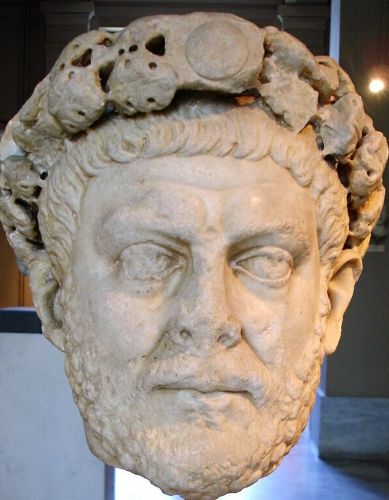
The reforms of Diocletian and Constantine were transformative moments in the history of the Roman Empire, marking a fundamental shift in how the empire was governed and structured. Diocletian, who became emperor in 284 CE, faced an empire in crisis. The Roman Empire was struggling with military defeats, economic instability, and administrative inefficiency. Diocletian’s first major reform was the establishment of the tetrarchy in 293 CE, a system that divided the empire into four regions, each ruled by a separate emperor. The empire was divided into two halves: the Eastern and Western Roman Empires, each governed by an augustus, the senior emperor, and a caesar, a junior emperor. This division aimed to provide more localized leadership and quicker responses to threats. The tetrarchy was an attempt to stabilize the empire by ensuring that no single emperor was overburdened by the empire’s vast size and complexity. Although the tetrarchy itself would not survive after Diocletian’s abdication, it laid the groundwork for future political divisions and set a precedent for a more centralized and bureaucratic administration.
Diocletian’s other major reforms were in the areas of military and fiscal administration. He recognized the need for a stronger and more organized military, particularly to defend the empire’s vast borders. He increased the size of the Roman army, established new military commands, and fortified frontier regions with specialized units. Diocletian also reorganized the provincial administration, dividing the empire into smaller, more manageable units called dioceses. This allowed for more efficient governance and easier collection of taxes, which Diocletian increased significantly in order to finance the expanded military. The emperor implemented a new tax system that assessed individuals and regions based on their wealth and resources, creating a more systematic approach to taxation. To stabilize the economy, Diocletian enacted price controls through the Edict on Maximum Prices in 301 CE, which sought to curb inflation by limiting the prices of goods and wages. While these price controls were largely ineffective and difficult to enforce, they reflected Diocletian’s attempt to stabilize the economy amid growing financial pressures.
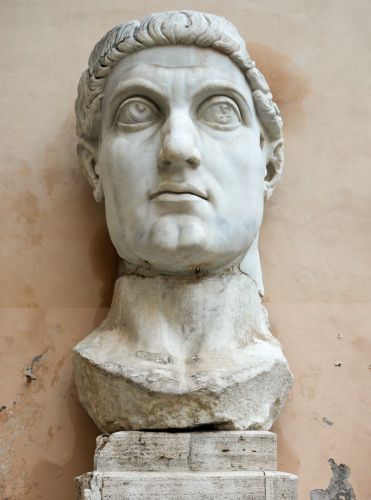
Constantine, who became emperor in 306 CE, continued and expanded upon Diocletian’s reforms, but with a focus on securing the empire’s long-term unity and embracing Christianity. One of Constantine’s most significant achievements was the establishment of Constantinople (modern-day Istanbul) as the new capital of the Roman Empire in 330 CE. This move shifted the political and cultural focus of the empire eastward, as the city was strategically located to control key trade routes and offer a safer location for imperial administration. Constantinople quickly became the center of power in the Eastern Roman Empire, symbolizing Constantine’s vision of a revitalized empire with a more stable and unified political structure. The establishment of a new imperial capital also had significant religious and cultural implications, as Constantine intended for the city to be a center of Christian worship and influence, setting the stage for Christianity’s increasing prominence in the empire.
Constantine’s most lasting contribution was his embrace of Christianity and the Edict of Milan in 313 CE, which granted religious tolerance to all religions within the empire, effectively legalizing Christianity. Constantine’s support for Christianity was not just a religious decision but a political one. By endorsing Christianity, he sought to unite the empire under a common religious framework, which had the potential to strengthen imperial cohesion. Constantine personally converted to Christianity, and he began to support the Christian church by providing funds for the construction of churches, exempting clergy from taxes, and calling the First Council of Nicaea in 325 CE to resolve theological disputes within Christianity. Constantine’s reign marked the beginning of a profound transformation in Roman religious policy, as Christianity gradually became the dominant religion of the empire. His reforms helped to integrate Christianity into the imperial structure, laying the foundation for the eventual establishment of Christianity as the official religion of the Roman Empire under Emperor Theodosius I later in the 4th century.
In addition to his religious reforms, Constantine continued Diocletian’s work of administrative and military reorganization. Constantine restructured the army to make it more effective and professional, creating a mobile field army that could be rapidly deployed to different parts of the empire. He also furthered Diocletian’s system of provincial organization, strengthening the imperial bureaucracy and creating a more efficient system of governance. Constantine expanded the number of civil service positions and further divided the empire into smaller units to allow for greater control and more direct imperial influence. He implemented reforms to make the empire’s taxation system more uniform and efficient, ensuring that the empire could sustain its military and administrative apparatus. Constantine’s administrative and military reforms, combined with his religious policies, created a more centralized and cohesive empire, capable of addressing internal challenges and external threats, and set the stage for the continued evolution of the Byzantine Empire, which would carry forward many of Constantine’s reforms long after the fall of the Western Roman Empire.
Communication and Record-Keeping
Imperial Posts (Cursus Publicus)
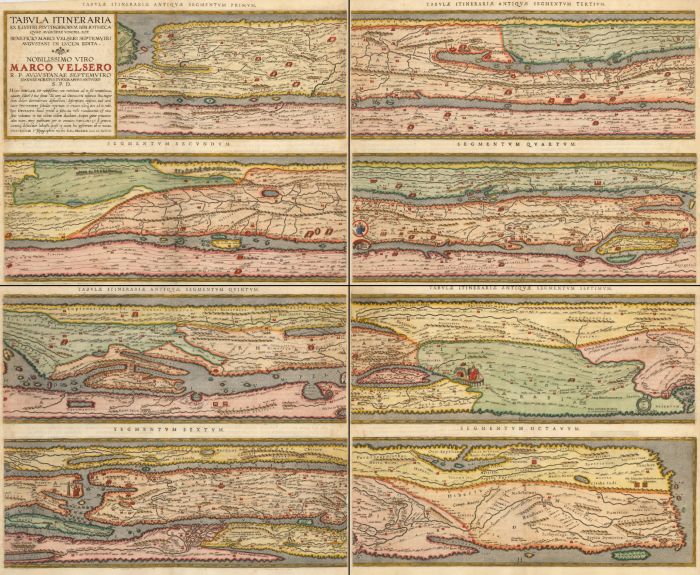
The Cursus Publicus was an essential element of Roman administrative infrastructure, functioning as the state-run courier and transportation system that facilitated communication and the movement of goods across the vast expanse of the Roman Empire. Established by Augustus in the early years of the Roman Empire, the Cursus Publicus was designed to ensure efficient governance, providing a reliable means for government officials to travel between Rome and the farthest reaches of the empire. The system was also crucial for the communication of imperial edicts, military commands, and other state business. It was organized around a network of roads and relay stations, or mutationes, where messengers could exchange tired horses for fresh ones, allowing them to maintain speed over long distances. These stations were typically located about 8 to 12 miles apart, ensuring that officials could cover significant distances in a relatively short amount of time. This network of roads and stations was a key component of the Roman Empire’s success, enabling swift communication and coordination across an empire that stretched from Britain to Mesopotamia.
The Cursus Publicus was not just for the benefit of the imperial bureaucracy; it was a tool of Roman control, reinforcing the power of the emperor and the central government. In practice, the system was used by government officials, military commanders, and couriers, and it was essential for maintaining administrative cohesion. Under the Cursus Publicus, travel was free for official business, but it came with certain restrictions and regulations. Only those with the proper authorization could use the system, and there were strict rules governing the use of horses and other resources. This helped to prevent misuse of the state-funded infrastructure and ensured that the Cursus Publicus remained a tool of efficiency rather than a burden on local resources. The system’s existence symbolized the centralized power of the emperor, who had the authority to control this vital means of communication and movement, further solidifying the emperor’s control over distant provinces and military units.
The logistics of the Cursus Publicus were vast and complex, requiring careful coordination of resources and personnel. The system relied on a large network of officials, administrators, and lower-ranking personnel to oversee the operation of relay stations, the maintenance of roads, and the management of horses and vehicles. These stations were typically staffed by local authorities who would ensure that travelers were provided with the necessary resources for their journey. The maintenance of roads and stations was a significant responsibility, often falling to local communities, which could be a financial burden. However, the system provided a great benefit to the empire by promoting the rapid movement of troops and supplies, which was essential for maintaining Roman control over such a large and diverse empire. The Cursus Publicus also helped to facilitate the smooth running of imperial trade, as goods could be transported quickly across vast distances, aiding the economic connectivity of the empire.
The Cursus Publicus was not limited to domestic communication; it was also a vital part of Rome’s diplomatic and military apparatus. Roman officials used the system to send urgent military messages, giving commanders the ability to communicate across the empire with remarkable speed. In times of war or crisis, the Cursus Publicus enabled the rapid mobilization of forces and the coordination of military operations. The speed of communication made it possible for Roman generals to receive orders directly from the emperor or the imperial administration, and it allowed for the efficient exchange of intelligence about enemy movements. This ability to manage and direct military campaigns from the center of the empire was one of the key advantages that the Romans had over other contemporary powers. Moreover, the Cursus Publicus played a role in the diplomatic relations of Rome, as messages and emissaries could travel quickly to negotiate treaties or conduct other diplomatic affairs.
The Cursus Publicus also served as a symbol of the Roman Empire’s organizational prowess and its capacity for managing a vast and diverse realm. While the system was primarily designed for official purposes, it was a testament to Rome’s emphasis on infrastructure and communication as tools of imperial control. The construction and maintenance of roads and the establishment of a reliable courier network not only enabled the administration of the empire but also linked its various parts, ensuring that remote provinces were not isolated from the imperial center. Over time, the Cursus Publicus became an integral part of the Roman experience, embodying the empire’s ambitions for centralized control, military efficiency, and economic integration. Despite its formal role in government, the Cursus Publicus also played a subtle but powerful role in the imperial propaganda, as it demonstrated the extent to which the emperor could manage and control every facet of the empire, from the farthest frontier to the heart of Rome itself.
Archives and Administrative Writing
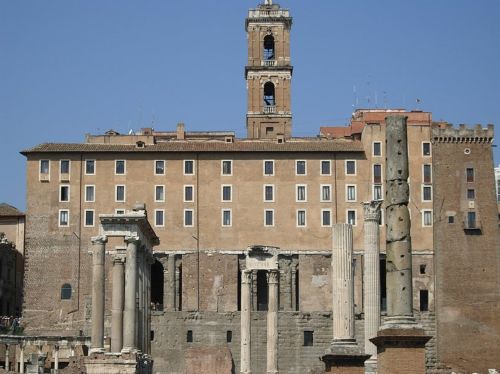
Archives and administrative writing played an indispensable role in the functioning of the Roman Empire, serving as the backbone for both governance and daily operations. As the Roman state expanded and its bureaucracy became increasingly complex, the need for systematic record-keeping grew. From the Republican period through the Empire, written documentation helped maintain continuity in administration, facilitated decision-making, and ensured that policies were implemented across the empire. Roman archives were repositories where important documents, such as decrees, edicts, financial records, and military reports, were stored and preserved. These archives were typically located in public buildings, such as the Tabularium in Rome, or in regional centers across the empire, where they were accessible to officials. Archives were vital for the functioning of both the central and provincial administrations, and the Roman state relied heavily on written communication to manage everything from tax collection to legal matters and military deployments.
One of the primary forms of administrative writing in ancient Rome was the acta, which were official records detailing proceedings, decisions, and transactions. These records could be produced by various officials, including magistrates, military commanders, and provincial governors. The acta were an essential tool for ensuring transparency and continuity in governance. For instance, the acta diurna (daily acts) were publicly posted notices that summarized the decisions of government, including legal rulings, public events, and announcements of political importance. These acts were often inscribed on boards or walls in public spaces, allowing Roman citizens to stay informed about the activities of the government. The production and circulation of these records were essential for maintaining public trust in the administration, as they ensured that government actions were visible and accountable. Additionally, the use of written records ensured that decisions and laws were communicated throughout the empire, regardless of distance, which was crucial for the empire’s cohesiveness and stability.
Roman archives also stored a vast array of legal and financial documents, which were key to the operation of Roman society. For example, documents related to property ownership, debts, land transactions, and contracts were carefully preserved in order to prevent disputes and ensure the legal standing of agreements. The Tabulae or acta related to such matters were kept in official archives and could be referenced by officials, magistrates, or even citizens in legal proceedings. Legal documentation was also crucial for the operation of the cursus honorum, the sequential career path followed by Roman politicians and magistrates, as records of their actions and decisions were kept for both public knowledge and historical record. The Roman legal system depended on written law, and the proper recording of legal precedents was essential for consistency and justice. Thus, the preservation of legal texts in archives was vital to the functioning of Roman governance.
In addition to legal and financial documents, archives also stored military and administrative communications. The Roman military, with its vast network of legions stationed across the empire, relied on written records for orders, reports, and logistical coordination. The epistolae (letters) sent between generals, legates, and the emperor were important for maintaining military strategy and ensuring the smooth running of campaigns. These letters were often written on materials such as papyrus, parchment, or wax tablets, which could be easily transported and read by those involved in military operations. In administrative offices, records were similarly essential for the routine management of the empire. For example, documents detailing census information, tax assessments, and distribution of grain were all stored in archives, allowing Roman officials to monitor and manage resources efficiently. The ability to refer back to these documents ensured that the empire’s complex administrative system ran smoothly and that no vital information was lost over time.
Roman administrative writing and archives were also a reflection of the broader cultural importance of literacy and documentation in Roman society. While literacy rates in ancient Rome were lower than in modern societies, the elite classes—particularly the senatorial and equestrian orders—were well-educated and played a crucial role in producing and managing official documents. The role of scribes and secretaries in Roman administration was essential, as they transcribed decrees, letters, and other communications in a clear, legible manner. Writing was seen as an authoritative means of communication, and many of the most important officials in the empire would have had scribes or assistants who specialized in administrative writing. The skill of writing and reading was not only an essential part of the bureaucracy but also served as a way for the Roman elite to distinguish themselves from lower social classes. This culture of documentation ensured that the Roman Empire’s vast system of governance was underpinned by a reliable means of preserving records, which was critical to the empire’s longevity and success.
Corruption, Criticism, and Decline
Contemporary Critics
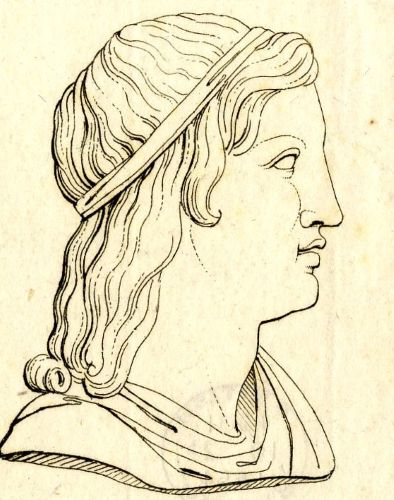
Corruption was a persistent issue in ancient Rome, and contemporary authors such as Tacitus and Suetonius frequently commented on it in their historical and biographical works. Tacitus, particularly in his Annals and Histories, offers a critical and often cynical view of the moral and political decline that he perceived in the Roman Empire, particularly under the reigns of emperors like Tiberius, Caligula, Nero, and Domitian. Tacitus’ portrayal of corruption is multifaceted, examining not only the corruption of individuals but also the systemic corruption within the Roman political and administrative structures. He frequently emphasizes how emperors and their inner circles used bribery, manipulation, and abuse of power to maintain control over the state. For example, in his account of Tiberius’ reign, Tacitus describes how the emperor relied heavily on informants and treachery to eliminate political rivals, cultivating an atmosphere of fear and paranoia that undermined the integrity of the Roman Senate and other governing bodies. Tacitus critiques how the imperial family and the elite used their wealth and influence to enrich themselves at the expense of the public good, noting how corruption extended from the highest echelons of power to the provincial governors and local officials.
Suetonius, in his The Twelve Caesars, also delves into the theme of corruption, particularly focusing on the emperors themselves and their often debauched lifestyles. His biographical sketches offer vivid descriptions of how emperors like Caligula and Nero engaged in corrupt practices that not only exploited the imperial coffers but also damaged the moral fabric of the empire. In his portrayal of Caligula, Suetonius highlights the emperor’s lavish spending, arbitrary executions, and extravagant indulgence in personal pleasures, which were all funded by the public treasury. Caligula’s reign is depicted as an era of moral decay, where corruption and tyranny permeated every level of the administration. Suetonius also records how Nero’s corruption manifested in his disregard for the well-being of his citizens, including the embezzlement of funds and the exploitation of his position for personal gain. His description of Nero’s extravagant building projects, such as the Domus Aurea (Golden House), built on land seized after the great fire of 64 CE, underscores the emperor’s insatiable desire for luxury at the expense of the state. Suetonius’ accounts often emphasize the personal flaws and moral weaknesses of emperors, suggesting that the corruption of rulers was a reflection of broader societal decay.
Tacitus’ analysis of corruption extends beyond individual emperors to encompass the Roman political system as a whole. He often suggests that corruption was an intrinsic part of the imperial system, where power concentrated in the hands of a single ruler led to a lack of accountability. The emperors, unchallenged by the Senate or the people, often operated with impunity, using their power to manipulate and corrupt the legal and political structures. For instance, in his description of the reign of Nero, Tacitus details how the emperor’s manipulation of the Senate and the judiciary led to widespread miscarriages of justice. Nero’s corruption was not limited to his personal vices but also extended to his governance, as he bribed and coerced the Senate into passing laws that favored his interests and those of his cronies. Tacitus frequently illustrates how the Roman Senate, which had once been a powerful check on imperial authority, became increasingly impotent and corrupt under the early emperors, unable to resist the encroaching autocracy. The prevalence of bribery, patronage, and self-interest in the Senate is a recurring theme in Tacitus’ work, highlighting how the institution’s moral decline contributed to the broader degradation of Roman political life.
Both Tacitus and Suetonius acknowledge that corruption was not confined to the emperors but also permeated the Roman elite. Tacitus, in particular, presents a damning critique of the moral decay among the senators, equating their ambition for wealth and power with the broader societal decline. The greed of the aristocracy, according to Tacitus, led them to collaborate with corrupt emperors, betraying the ideals of republicanism and justice in favor of personal gain. He describes how senators and equestrians would often engage in bribery, using their influence to secure lucrative positions or avoid prosecution for crimes. In his Annals, Tacitus notes that the loyalty of the elite to the emperor was often bought through favors and rewards, further entrenching corruption within the ruling class. Suetonius, while focusing more on the emperors themselves, similarly notes how the imperial family’s inner circle—ministers, freedmen, and other close associates—were often guilty of exploiting their proximity to power for personal enrichment. The personal greed of those close to the emperor, such as the advisors and the household, created a web of corruption that infiltrated all levels of governance.
The social impact of corruption is another theme that Tacitus and Suetonius explore, showing how the pervasive culture of greed and dishonesty undermined the Roman state. In Tacitus’ Annals, the sense of moral decay is palpable, as he describes a society where political and legal norms were routinely violated, and where power was no longer derived from merit or public service but from the ability to manipulate and deceive. He laments the loss of virtue among the Roman elite, who, in their pursuit of wealth and status, betrayed the values that had once made Rome great. Suetonius, too, conveys a sense of moral degradation, particularly in his accounts of emperors whose corrupt actions were mirrored by the behaviors of those around them. The contrast between the grandeur of Roman imperial ideals and the sordid realities of corruption highlighted by these authors serves as a reminder of the fragility of political systems and the ease with which they can be corrupted. Through their critical portrayals, Tacitus and Suetonius offer timeless reflections on the dangers of unchecked power, the erosion of institutional integrity, and the consequences of corruption for both rulers and ruled.
Problems of Scale and Inefficiency
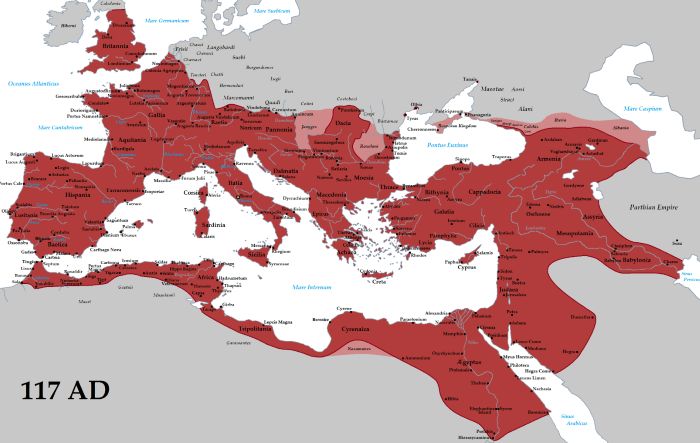
The Roman Empire, at its height, was one of the largest and most complex political entities the world had ever seen, spanning vast territories across Europe, North Africa, and the Near East. This immense scale brought with it significant challenges of administration, logistics, and governance, which often resulted in inefficiencies. One of the fundamental problems of scale was the difficulty in coordinating and managing resources across such a vast empire. The Roman government, despite its sophisticated administrative apparatus, struggled to ensure the efficient distribution of goods, particularly in areas like grain supply, taxation, and military provisions. The empire relied heavily on provincial governors, who often acted with considerable autonomy, which led to disparities in how policies were implemented across different regions. In some cases, local elites in the provinces manipulated or bypassed imperial mandates, enriching themselves at the expense of both the state and the local populations. This lack of central control and consistency led to inefficiencies in the empire’s ability to maintain stability, particularly when it came to ensuring the fair and effective distribution of resources.
Another significant issue of inefficiency stemmed from the complexity of Roman bureaucracy. Despite the impressive organizational framework of the Roman state, which included various magistrates, military officers, and civil servants, the sheer volume of administrative tasks often overwhelmed the system. For example, the Roman tax system, which relied on a variety of taxes such as land taxes, sales taxes, and tribute from provinces, was notoriously inefficient and difficult to manage across the empire. Tax collectors, known as publicani, were private contractors who often exploited the system for their own gain, using extortion and corruption to extract higher taxes than were officially mandated. This created significant resentment among local populations and undermined the effectiveness of the empire’s fiscal policies. Furthermore, the vast distances between Rome and the farthest reaches of the empire made it difficult to enforce uniform policies, leading to uneven tax collection and economic disparities between different provinces. The inefficiency of the Roman taxation system was a constant source of unrest and contributed to periodic economic crises throughout the empire’s history.
In terms of military logistics, the sheer size of the Roman Empire posed a daunting challenge. The Roman legions, stationed across the empire to maintain order and defend its borders, required vast resources in terms of supplies, transportation, and personnel. The Roman military’s logistical system, while advanced for its time, was often strained by the empire’s size. The need to move troops and supplies over long distances, especially during military campaigns, stretched the empire’s infrastructure to its limits. Roads, though extensive and well-built, were not always capable of supporting the heavy demands placed on them by the army’s movements, particularly during times of conflict. The Roman supply chains, which relied on a network of ports, roads, and rivers, were frequently disrupted by local rebellions, pirates, or hostile forces, leading to delays and shortages. The inefficiencies in military logistics were most pronounced during the later periods of the empire, when the western provinces were increasingly vulnerable to external threats, such as the invasions of the Germanic tribes, and the Roman military struggled to respond effectively due to logistical constraints.
The administration of justice also suffered from inefficiencies, particularly as the empire grew larger. Roman law, based on written codes and legal principles, was intended to provide a consistent and fair system of justice throughout the empire. However, as the population grew and the empire expanded, the application of law became increasingly inconsistent. Local magistrates, who were responsible for administering justice in the provinces, often lacked the resources or the support to enforce the law uniformly. Furthermore, the Roman legal system was heavily reliant on written documentation, which required a level of literacy and bureaucracy that was not always available in remote regions. In some cases, legal disputes could drag on for years due to the complexities of Roman law, particularly when it came to property rights or inheritance cases. The sheer volume of legal cases, combined with the inefficiency of local courts, led to delays in the delivery of justice and an erosion of trust in the legal system. This problem was exacerbated by the pervasive corruption within the legal system, where wealthy individuals could bribe magistrates or manipulate legal proceedings to their advantage, undermining the effectiveness of the law.
The problem of scale and inefficiency was also evident in the Roman empire’s social and economic structures. The vast disparity between the wealth and status of the elite and the lower classes contributed to social tensions that hindered the empire’s ability to function efficiently. The elite, particularly the senatorial and equestrian classes, controlled vast amounts of land and wealth, while the majority of the population lived in poverty, dependent on the state for grain distributions and welfare programs. This inequality created significant economic inefficiencies, as resources were often hoarded by the wealthy rather than being invested in productive endeavors. Additionally, the reliance on slave labor in both agriculture and industry, while providing cheap labor, also stifled innovation and created an economy that was inefficient in terms of long-term sustainability. The inability to address these deep social divides led to unrest and dissatisfaction, which in turn further strained the imperial system. The empire’s failure to address these underlying issues of inequality and inefficiency contributed to its eventual decline, as the administrative structure became less capable of managing the demands of the empire’s vast and diverse population.
Administrative Challenges in Late Antiquity
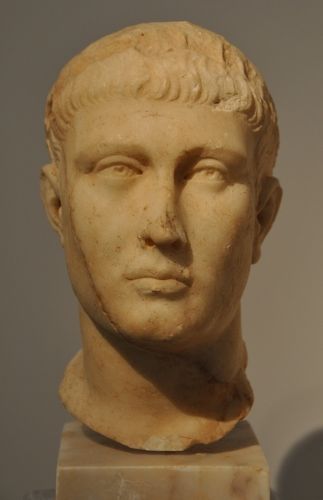
The administrative challenges faced by the Roman Empire during Late Antiquity were both numerous and complex, largely stemming from the empire’s vast size, increasing internal fragmentation, and external pressures. As the Roman Empire expanded in both geographical and political terms, the system of governance became increasingly difficult to manage. One of the most significant challenges in the later stages of the empire was the growing division between the eastern and western regions. The administrative structure that had once operated relatively efficiently under a single imperial authority struggled to meet the needs of such a vast, diverse population. Emperors in the West and East were often operating under separate, sometimes conflicting, agendas. This division, formalized with the division of the empire in 395 CE after the death of Theodosius I, led to a further decentralization of power and the weakening of central authority, which in turn made coordinated administration of the empire more challenging. In the West, this fragmentation became particularly apparent as the western half of the empire faced economic decline, military instability, and increasing pressure from external invasions, while the Eastern Roman Empire, later known as the Byzantine Empire, was more resilient due to its relatively stronger economy and more stable administration.
One of the key administrative challenges during Late Antiquity was the issue of military overextension. With the Roman Empire facing external threats from numerous barbarian tribes such as the Huns, Goths, Vandals, and Franks, the need for military expansion and defense grew exponentially. The Roman military was tasked with defending a border that stretched from the British Isles to the sands of Mesopotamia. However, despite the strategic importance of military control, the empire’s administrative infrastructure struggled to support the armies spread across these vast territories. The result was a military system that, while formidable in its early centuries, became increasingly overstretched and inefficient. Roman legions stationed on the frontier often lacked sufficient supplies, reinforcements, and logistical support. Local leaders and military commanders gained increasing autonomy, sometimes prioritizing their own interests over imperial objectives. The military’s failure to respond effectively to internal revolts and external invasions, such as the sack of Rome in 410 CE by the Visigoths and the eventual fall of the Western Roman Empire in 476 CE, exposed the weakness of Rome’s administrative oversight and its inability to defend its vast borders efficiently.
Another pressing challenge was the empire’s strained financial situation. Late Antiquity saw a decline in the Roman economy, worsened by heavy taxation, the debasement of coinage, and the increasing reliance on plunder and tributes from conquered peoples. The need to fund the military and imperial bureaucracy placed a heavy burden on the provinces, and the already overtaxed population became increasingly resistant to contributing to the imperial coffers. This financial strain was compounded by the fact that much of the Roman elite had become accustomed to large estates and a lavish lifestyle, which drained resources from the state. The shift towards an increasingly agrarian-based economy, with an emphasis on large latifundia (plantations) worked by slaves, further exacerbated this problem. With the decline of urban centers and the collapse of many trade networks, the empire’s once-thriving economy faltered. As the financial system became more fragile, the administrative apparatus had to resort to increasingly desperate measures, such as imposing new taxes or even selling public offices, which further eroded the state’s legitimacy and contributed to growing discontent among the people.
The growing influence of Christianity during Late Antiquity also posed significant challenges to the Roman administrative system. The conversion of Emperor Constantine to Christianity in the early 4th century CE and the subsequent Edict of Milan (313 CE), which legalized Christianity, marked the beginning of a transformation in the Roman state. The religious shift added a layer of complexity to Roman governance, as the new Christian bishops and clergy became powerful political players within the imperial bureaucracy. Religious leaders gained influence, particularly in the cities, where Christian communities began to challenge traditional Roman religious institutions. This shift led to the decline of pagan religious practices and the eventual establishment of Christianity as the state religion under Emperor Theodosius I in 380 CE. The administration of religious policy became a source of tension, as laws were enacted to suppress paganism, while the Christian church became increasingly integrated into the imperial apparatus. The administrative challenge here lay in balancing the demands of a now-dominant religion with the legacy of traditional Roman governance, which had been centered around polytheism and imperial cults. The rise of Christianity in the imperial system also led to ideological conflicts within the empire, particularly over doctrinal issues, which, at times, contributed to administrative fragmentation and political instability.
The fall of the Western Roman Empire in 476 CE marked a collapse of central imperial authority, but it also highlighted the increasing reliance on local elites and military leaders to manage the empire’s administrative functions. As the central government weakened, regional leaders such as the barbarian kings, military commanders, and local aristocrats assumed more control over the provinces. This shift led to a decentralization of power, as local elites—many of whom had once been loyal to the imperial bureaucracy—began to operate more independently. In the face of external invasions, administrative competence varied greatly from region to region. In the East, however, the Byzantine Empire was able to maintain a relatively stable administration through its complex bureaucracy and more centralized control, with the emperor wielding absolute power in both secular and religious matters. The transition from a unified empire to a more fragmented system of local governance and the increasing reliance on military force to maintain order and defend borders were crucial elements of the administrative challenges faced in Late Antiquity. This decentralization laid the groundwork for the development of the medieval feudal system and marked the end of the classical Roman world.
Conclusion
Legacy and Influence on Later States
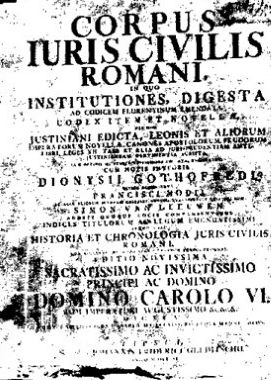
The legacy and influence of ancient Rome on later states are immeasurable, with Rome’s political, legal, military, and cultural systems continuing to shape the course of world history long after the fall of the Roman Empire. The political and administrative structures developed by the Romans served as a foundation for many of the governmental systems that emerged in medieval and early modern Europe. The Roman concept of republicanism, though it ultimately failed in Rome itself, inspired later political systems. Roman law, with its principles of justice, property rights, and citizenship, became a model for legal systems in Western Europe, particularly during the Renaissance and beyond. The codification of Roman law, most notably in the Corpus Juris Civilis under the Emperor Justinian in the 6th century CE, influenced the development of modern civil law traditions, which are still the basis for legal systems in many countries today. This legal inheritance made the idea of a systematized body of law, accessible and applicable to all citizens, a cornerstone of Western political thought.
Roman military organization and strategy left a profound impact on later states, especially in Europe. The discipline, organization, and tactics of the Roman legions were admired and emulated by later military leaders and statesmen. During the medieval period, for example, the notion of a standing army and the use of legions or similar formations remained influential. The concept of the legion as a well-disciplined, hierarchical military unit was adopted in various forms by subsequent military systems. The Romans’ focus on engineering and military logistics also had a lasting effect on warfare, influencing the design of fortifications, roads, and siege tactics that would be used by later empires and kingdoms. Additionally, Roman military strategy, such as the use of fortifications and roads to maintain control over vast territories, informed the military planning of European powers well into the modern age.
In terms of governance, Rome’s imperial model left a lasting imprint on the organization of later empires, especially during the medieval and early modern periods. The idea of a centralized autocratic ruler, as exemplified by the Roman emperors, influenced the governance of later states such as the Byzantine Empire, the Holy Roman Empire, and even monarchies in medieval Europe. The concept of imperial authority, with its divine legitimacy and power over both the state and the military, was particularly influential in shaping the idea of monarchy and centralized control in European states. The Byzantine Empire, for instance, continued many Roman traditions in terms of government structure, legal systems, and military organization. The title of emperor (or basileus in Greek) itself directly descended from the Roman imperator, and the organization of the Byzantine bureaucracy retained many Roman influences, including its provincial structure and its legal codes.
Culturally, Roman art, architecture, and philosophy continued to resonate throughout the centuries, inspiring the Renaissance and influencing Western civilization as a whole. Roman art and architectural forms, including the use of arches, vaults, and domes, became foundational in the construction of monumental buildings and public works throughout Europe. The Romans’ development of concrete, their extensive use of columns, and their innovations in constructing large public baths, amphitheaters, and roads all served as models for later architecture, particularly during the Renaissance when classical ideals were revived. Furthermore, Roman philosophy, particularly Stoicism and the works of philosophers such as Cicero, continued to influence thinkers throughout history, including in the medieval and early modern periods. The Roman emphasis on civic duty, governance, and rhetoric, alongside their contribution to the development of the Western philosophical tradition, would reverberate through the works of Renaissance humanists and Enlightenment thinkers.
Roman culture also played a pivotal role in shaping Christian civilization. The conversion of Constantine and the eventual establishment of Christianity as the state religion of the Roman Empire marked a turning point that profoundly influenced the development of European society. The Christian Church inherited much from Roman institutions, such as the organization of dioceses, the use of Latin as the liturgical language, and the hierarchical structure of bishops and clergy. In fact, many aspects of Roman civil governance were absorbed into the early Christian Church, which became a central institution in medieval Europe. The legal system of Rome, with its emphasis on citizenship, rights, and the protection of property, laid the groundwork for the later Christian canon law, which governed ecclesiastical and even secular matters in Europe throughout the Middle Ages. The legacy of Roman religious institutions, particularly in the way they were integrated into governance and public life, helped establish the dominant position of Christianity in Europe and influenced the governance of states throughout the Middle Ages.
Synthesis of Key Themes
The administration of ancient Rome, with its complex systems of governance, law, military organization, and economic management, offers a rich tapestry of themes that continue to influence modern governance. One of the most significant themes in Roman administration was the balance between centralization and local autonomy. The Roman state, particularly at the height of its power, operated under a highly centralized authority, with the emperor at the apex of the imperial system. However, the vastness of the empire, coupled with its diverse populations and regions, required local officials—such as provincial governors and military commanders—to exercise significant autonomy in managing day-to-day affairs. This decentralization created a system of governance that could adapt to the unique needs of different provinces while still maintaining an overarching sense of unity under Roman law and imperial authority. The synthesis of central control with local governance enabled the Roman Empire to manage a vast array of territories, even as it faced internal divisions and external threats.
Another key theme in Roman administration was the integration of military and civil power, a duality that was characteristic of much of Roman history. The Roman military, though often separate in terms of command structure and operational procedures, was intrinsically linked to the political and administrative system. Generals were not just military leaders; they were political figures with considerable influence in Roman society. As a result, the boundaries between military and civil authority were often fluid. This overlap was particularly evident during times of crisis, such as the fall of the Republic and the rise of imperial power. Emperors, such as Augustus, understood the need to maintain the loyalty of the military, using it not only as a force for defense but also as a tool for political consolidation. This blending of military and civil spheres allowed the Roman Empire to maintain order and respond to external threats, but it also created tensions, as military leaders often sought political power, sometimes undermining civilian authority, as seen in the rise of emperors like Julius Caesar.
Roman law, another cornerstone of Roman administration, provides a key theme that synthesized the empire’s commitment to both order and flexibility. Roman law was remarkably sophisticated for its time, with concepts such as jus civile (civil law), jus gentium (law of nations), and jus naturale (natural law) forming the foundation of Roman legal thought. The administration of law was not limited to the central government; it was deeply embedded in the provinces as well. Roman citizens enjoyed legal protections, but even those outside of the citizenry—such as free non-Roman subjects and slaves—were governed by a complex set of legal norms. One of the Roman legal system’s great achievements was its ability to adapt over time, with the creation of legal codes that addressed evolving societal needs. This adaptability was key to maintaining stability in a rapidly changing empire, where the balance between tradition and reform was constantly shifting. Roman law provided a common framework that helped to unify the empire, even as it accommodated local customs and practices, ensuring that legal disputes could be resolved in a manner that was seen as both just and consistent with Roman ideals.
Another key synthesis in Roman administration lay in the empire’s ability to manage resources, particularly in terms of taxation and public welfare. Roman taxation was designed to fund the military and imperial projects, but it also served as a means of maintaining social order. The Roman tax system was highly structured, yet it faced challenges in the provinces where local elites often manipulated tax assessments to their advantage. Roman administrators were aware of the difficulties of fair taxation, and efforts were made to standardize assessments and prevent abuses. The grain dole (or annona) is another example of how Roman administration sought to balance fiscal needs with social welfare. By providing subsidized grain to the populace of Rome, the state maintained public order and prevented unrest. This system, however, was not without its drawbacks, as it contributed to the growing dependency of the urban poor on the state. The synthesis of these themes—resource management, military expenditure, and social welfare—highlighted the challenges Rome faced in maintaining the balance between economic sustainability and public welfare, particularly as the empire entered its later stages and economic decline set in.
Roman administration was marked by a theme of continuity and adaptation, especially in the face of internal and external pressures. Over the centuries, the Roman system of government, though constantly evolving, retained certain foundational principles. The Senate, for example, remained a central institution throughout much of Roman history, even as its actual power diminished with the rise of imperial rule. The adaptability of Roman administration allowed it to survive for centuries, adjusting to changing political, military, and economic conditions. The reforms of Augustus, Diocletian, and Constantine exemplify this ability to adapt, as each emperor implemented structural changes to address the unique challenges of their respective times. Augustus centralized power, while Diocletian split the empire into manageable units, and Constantine introduced the idea of the Christian Empire, reshaping both the religious and political landscape. This theme of adaptation, alongside continuity in core Roman values such as law, military might, and social welfare, ensured the long-lasting legacy of Roman administrative practices, which would influence later political systems and legal structures for centuries to come.
Originally published by Brewminate, 05.14.2025, under the terms of a Creative Commons Attribution-NonCommercial-NoDerivatives 4.0 International license.
